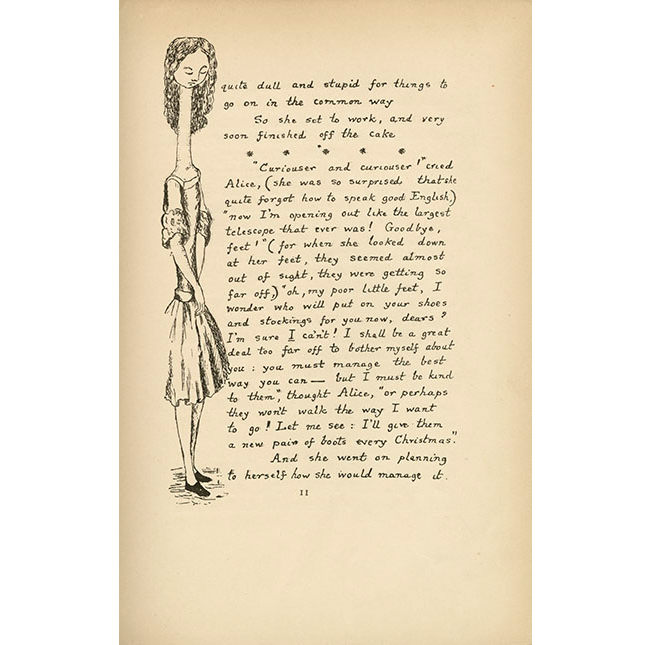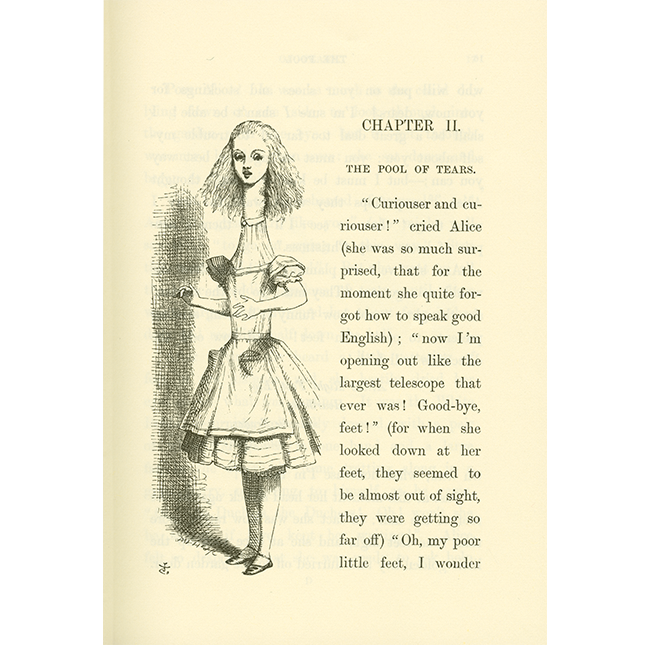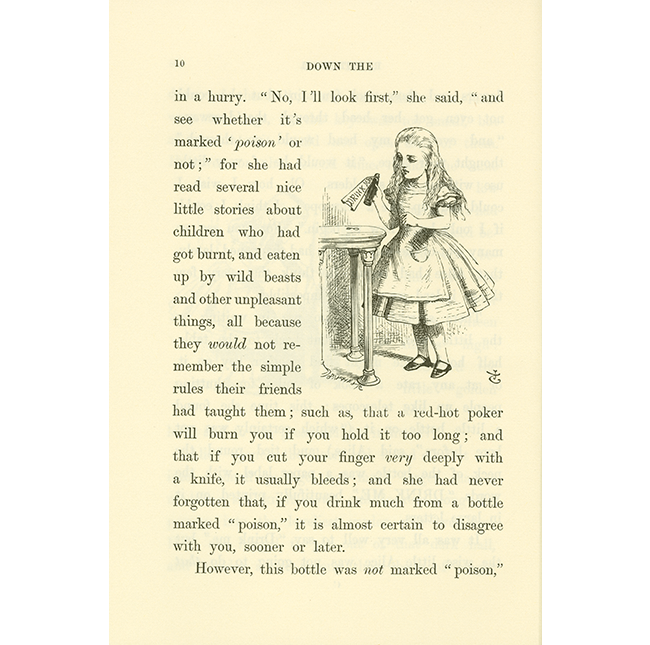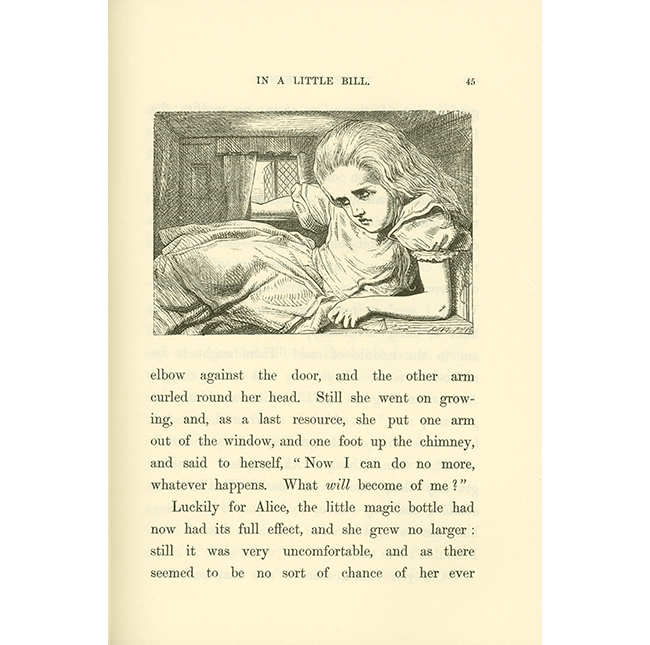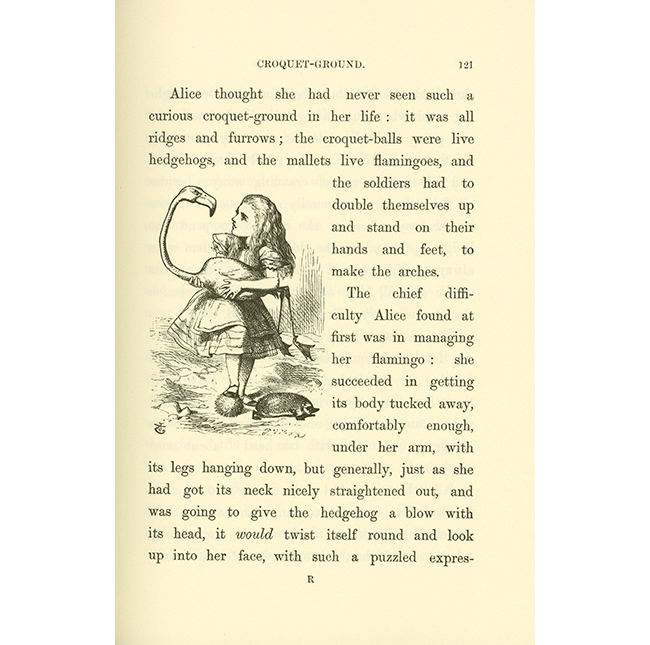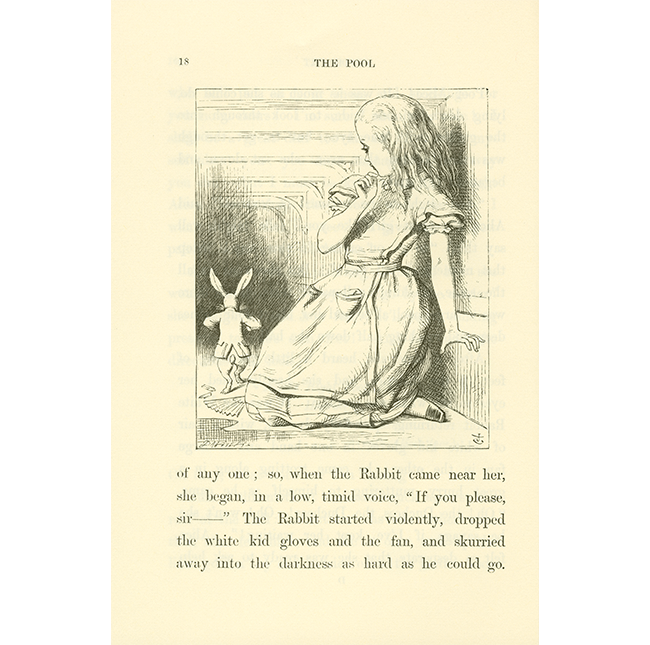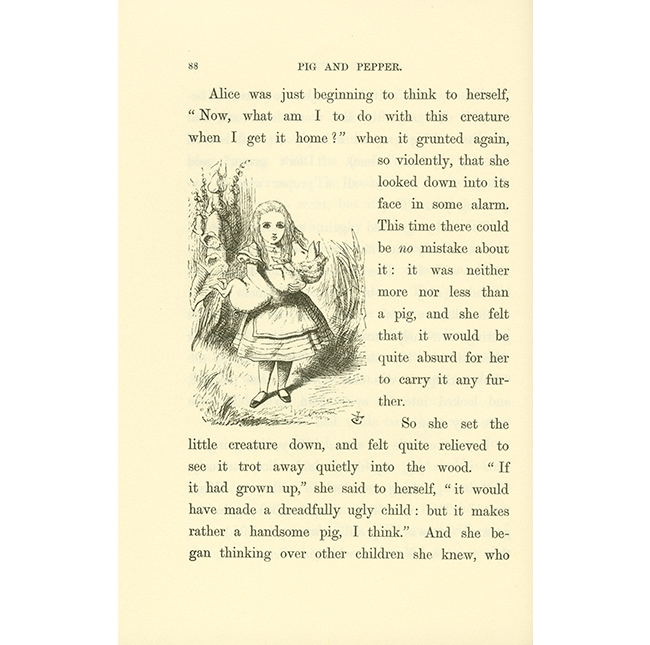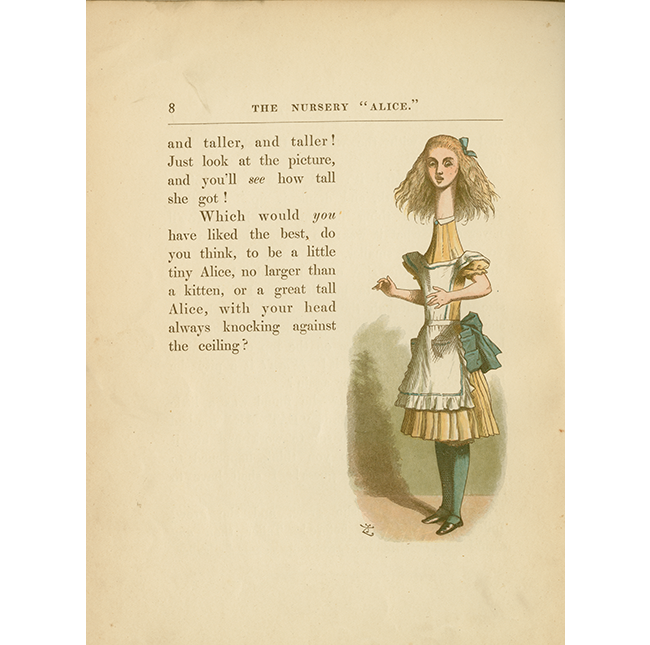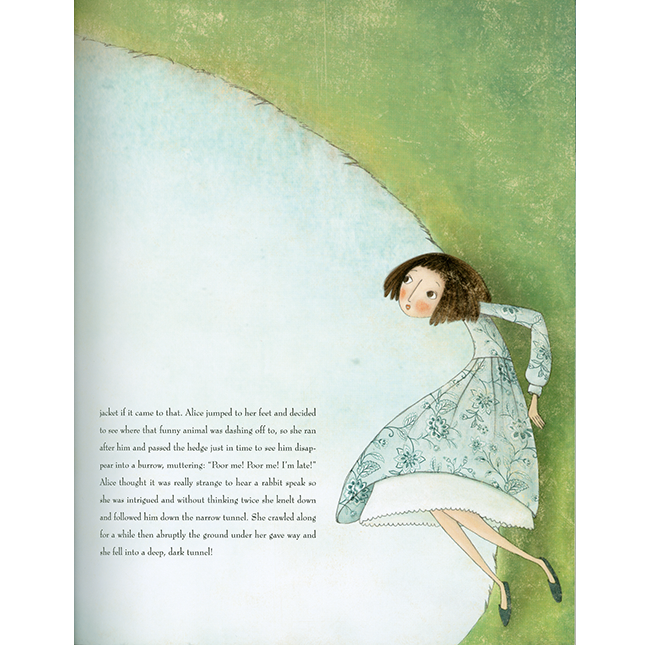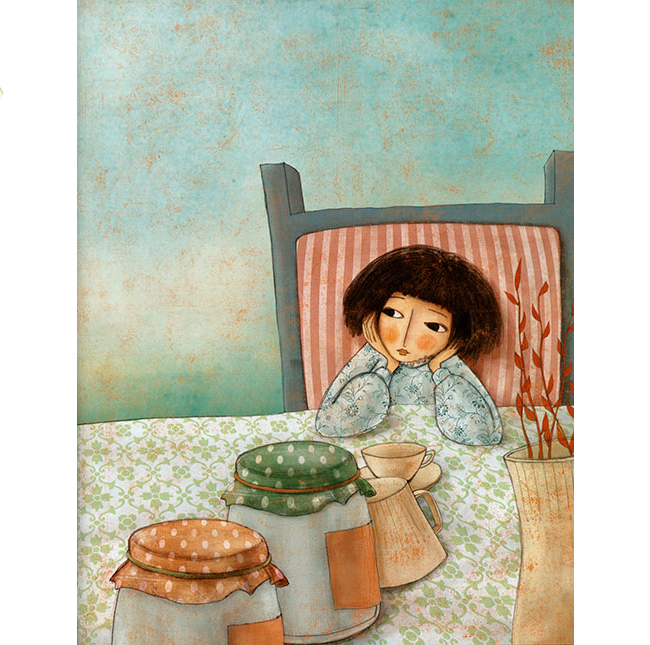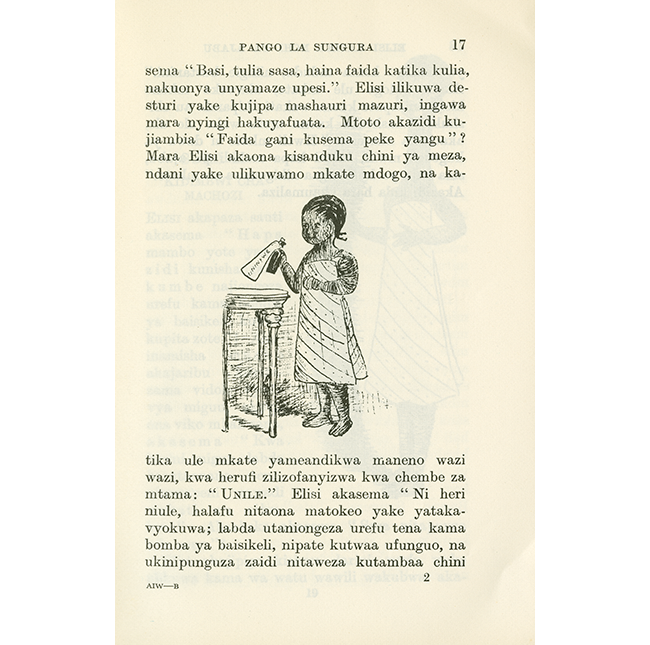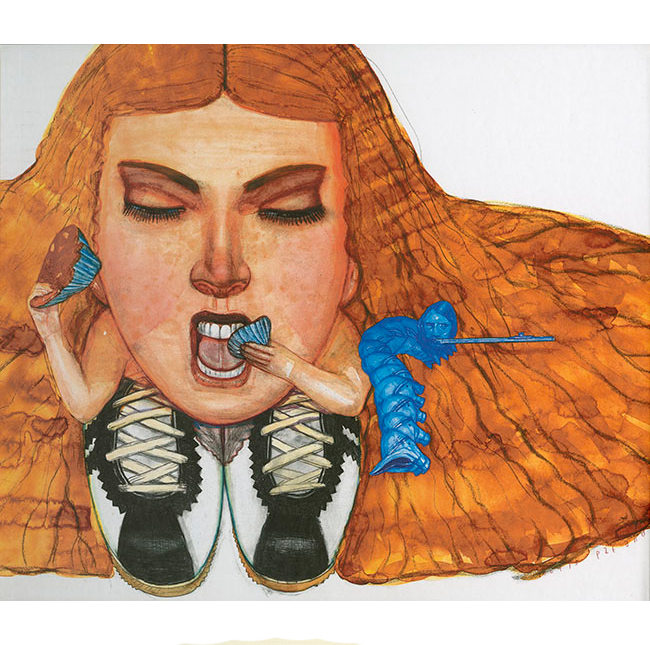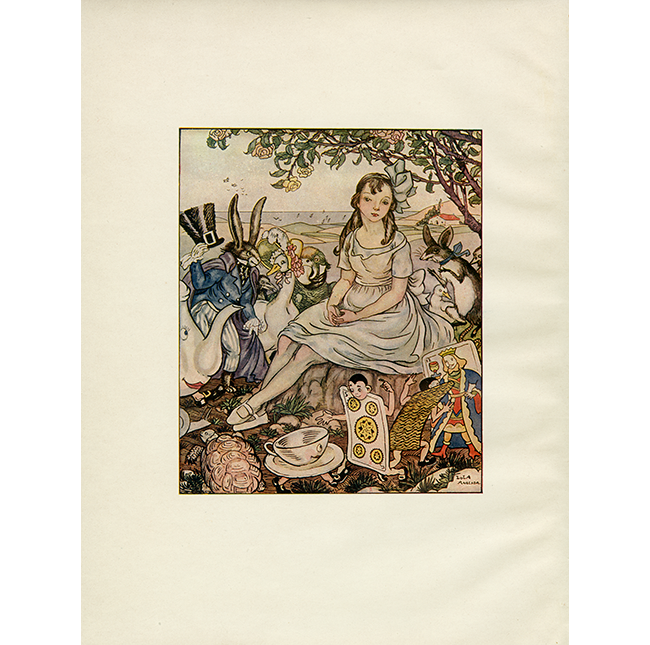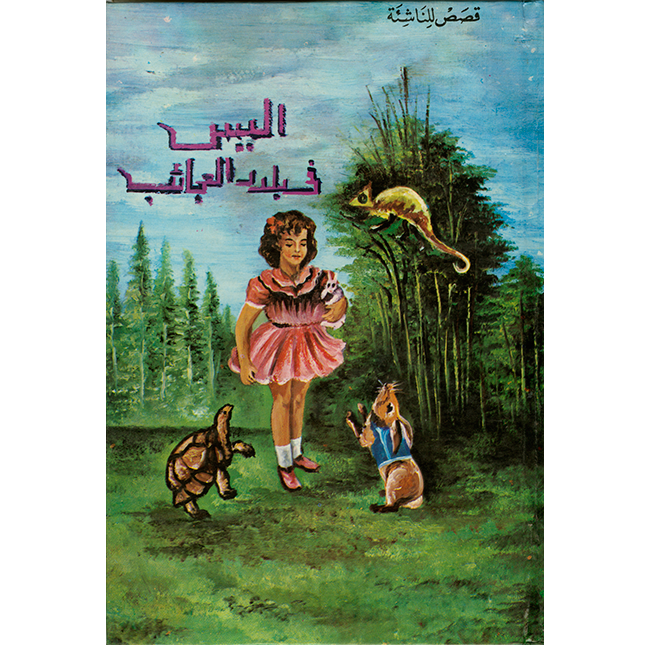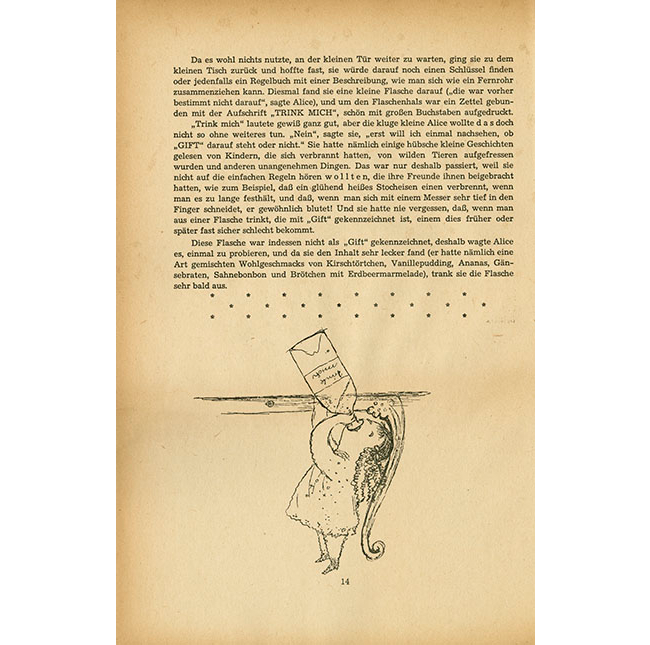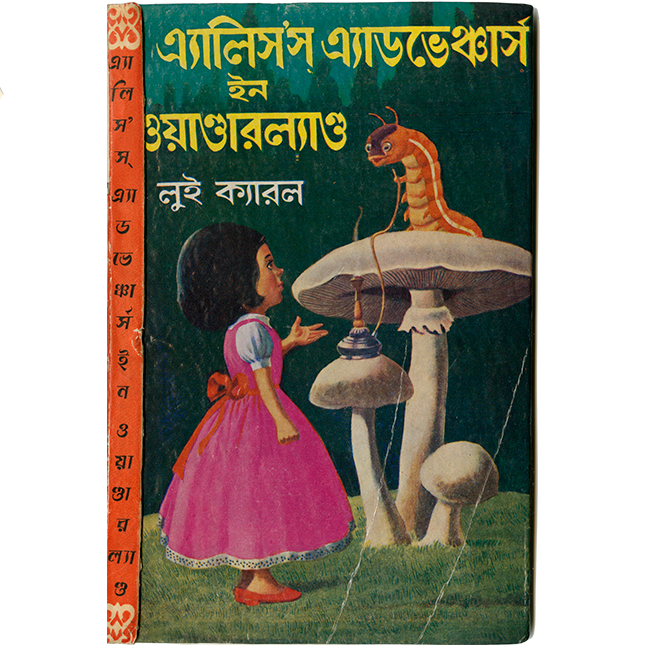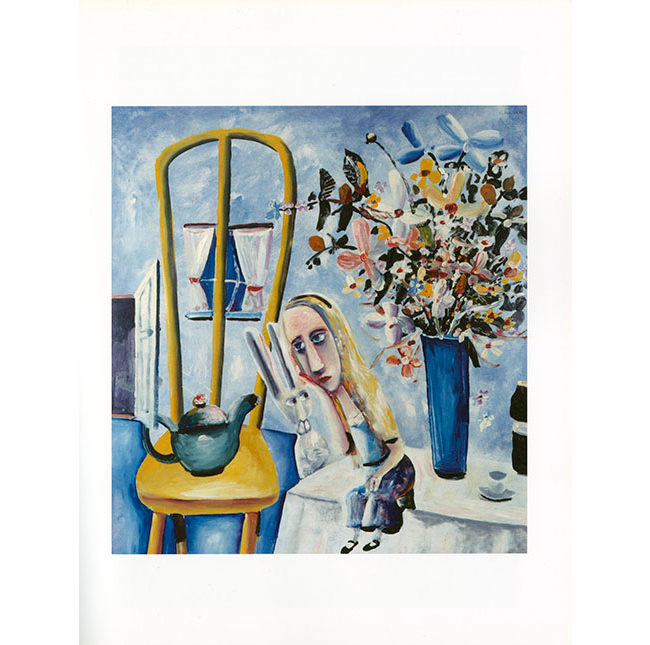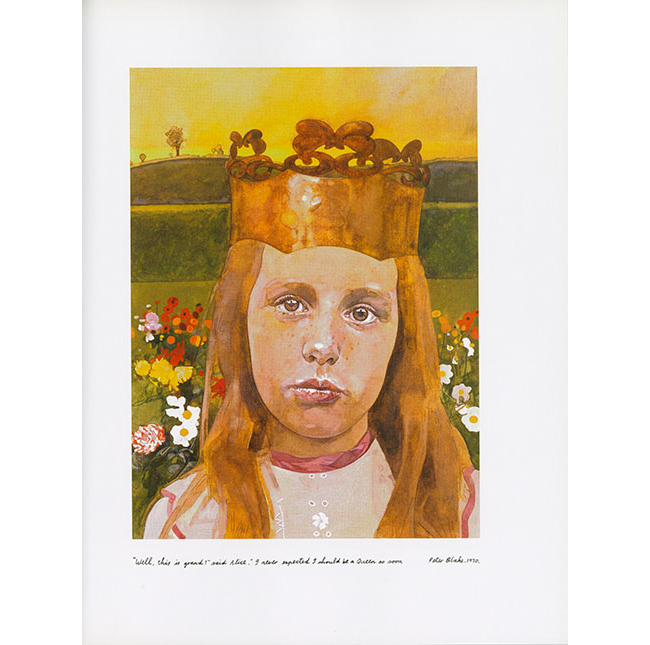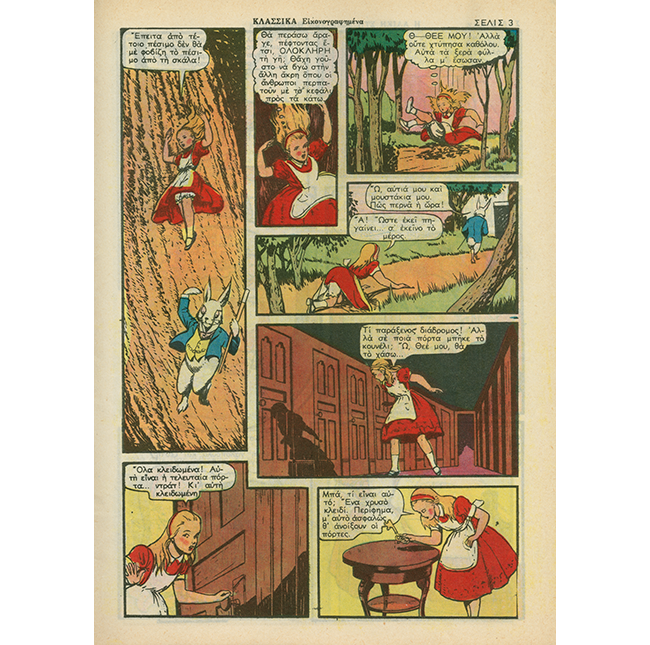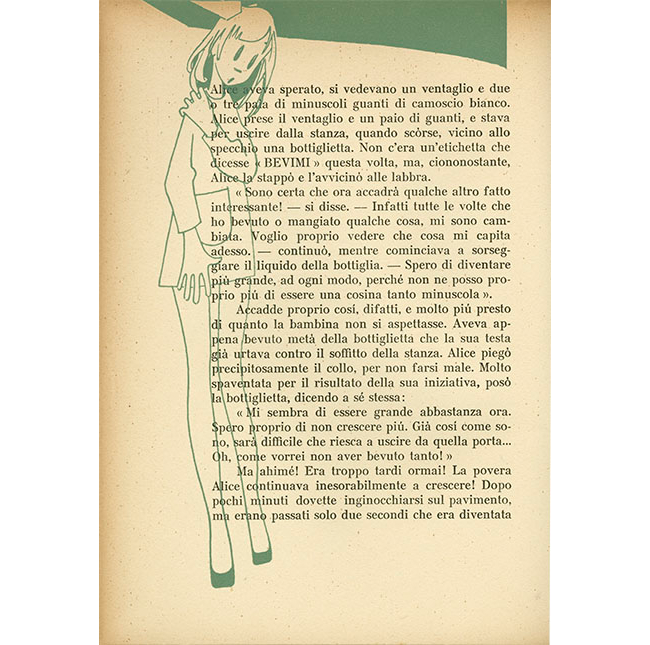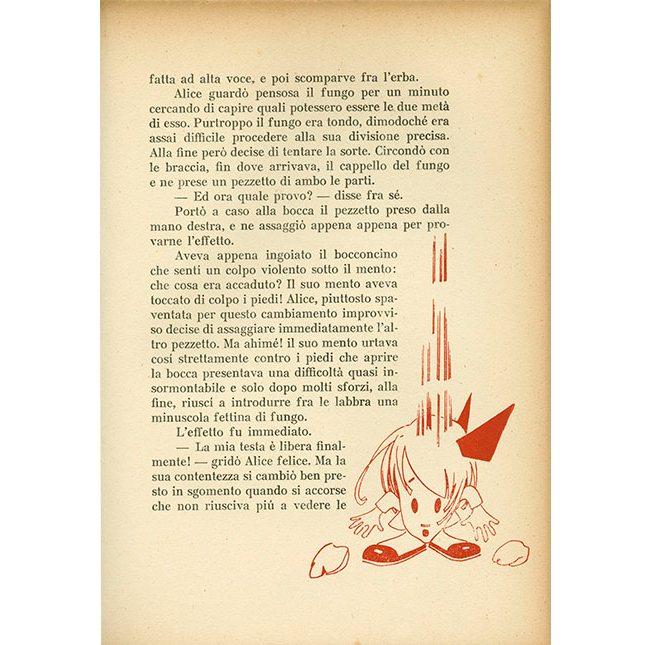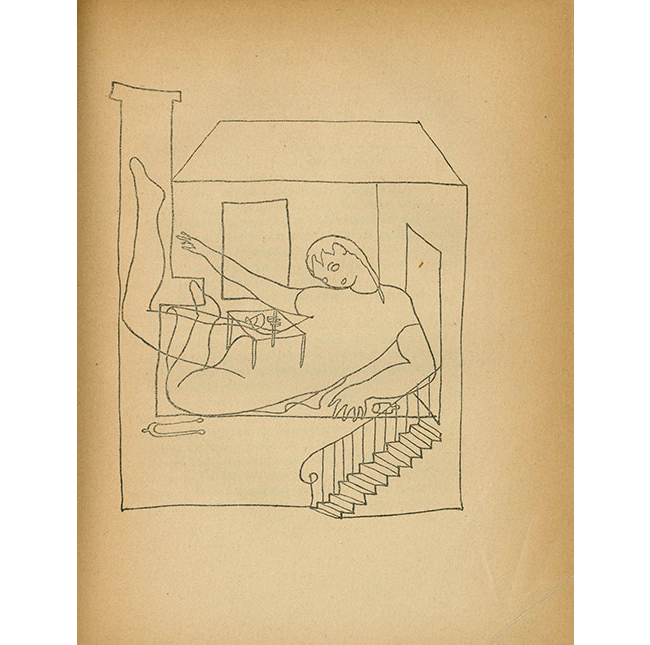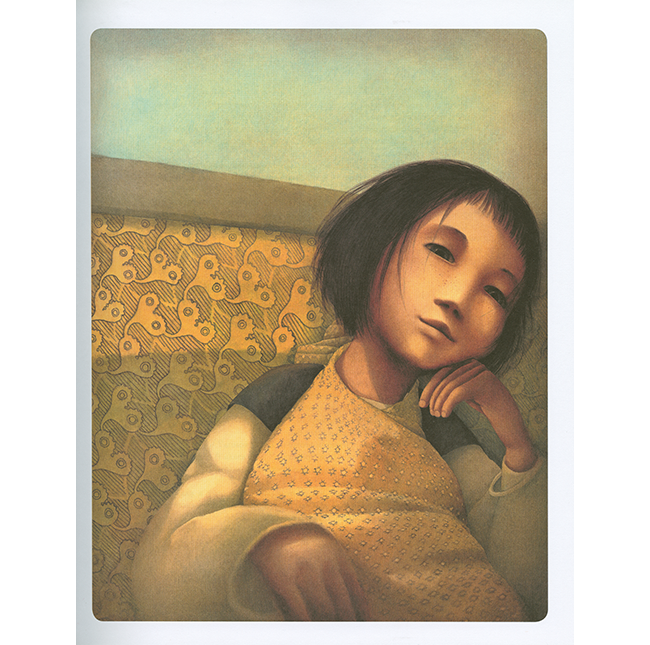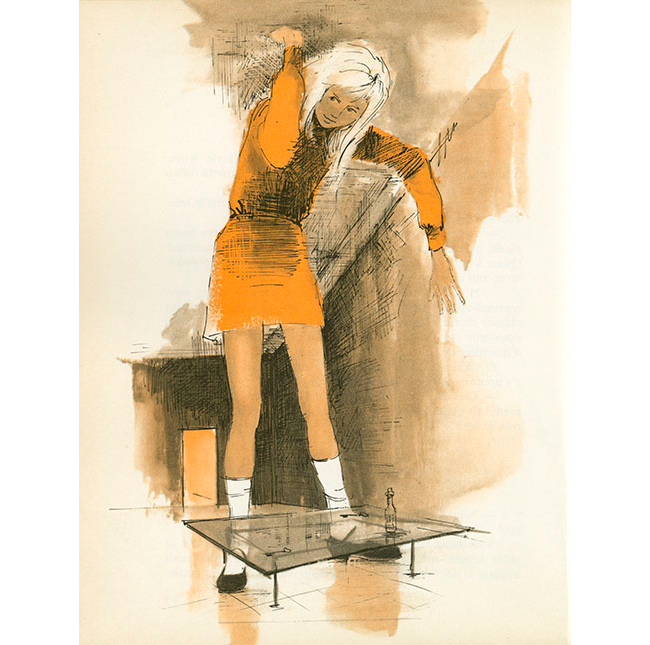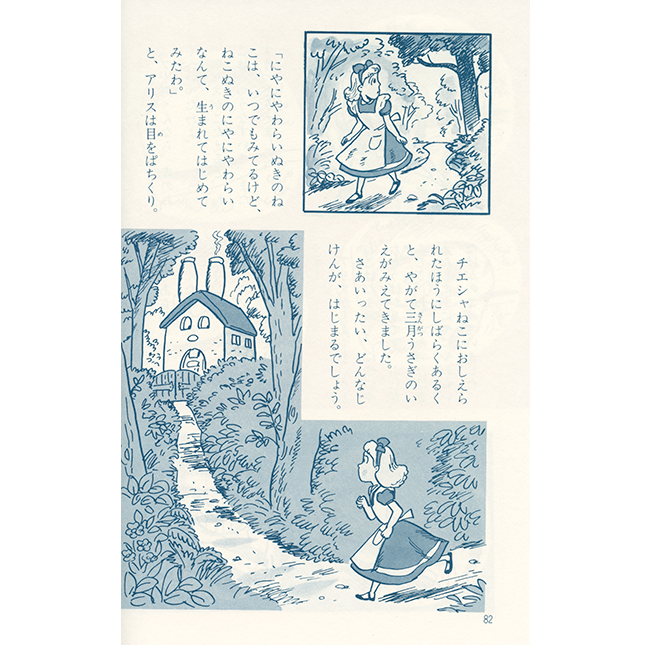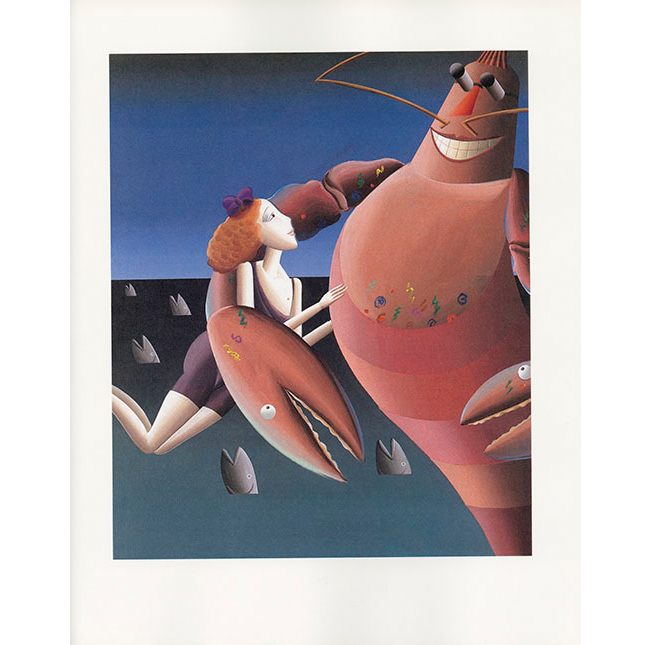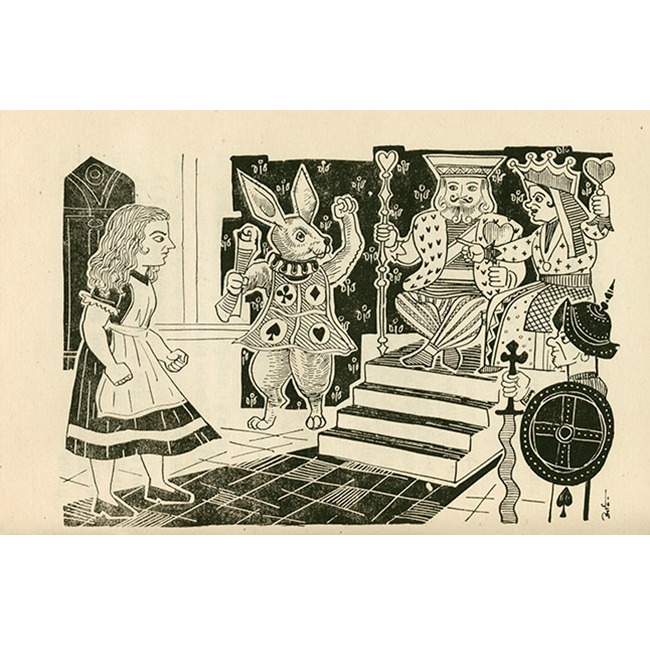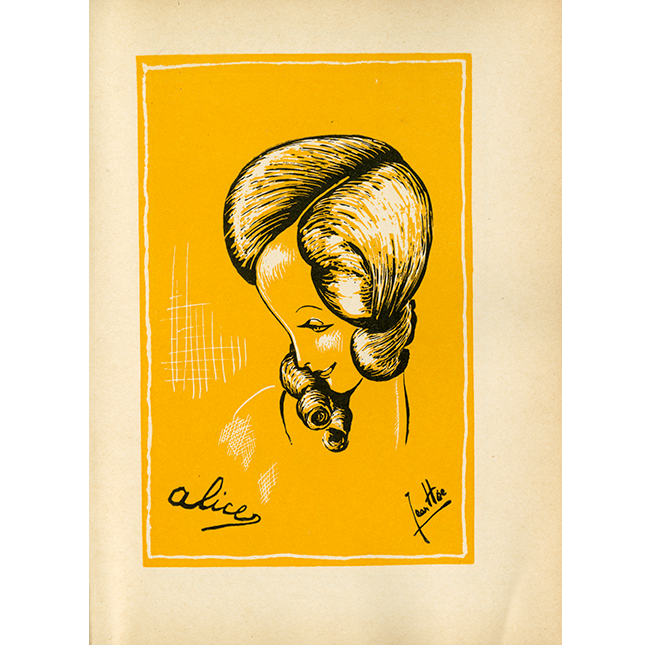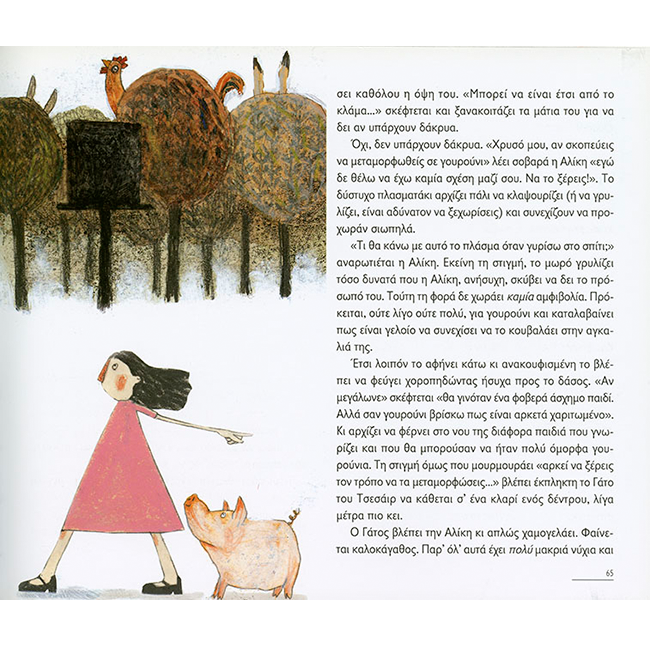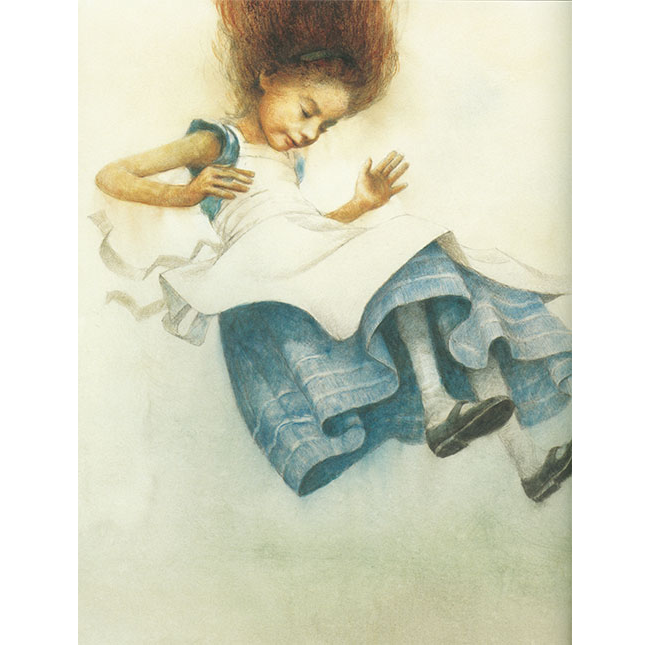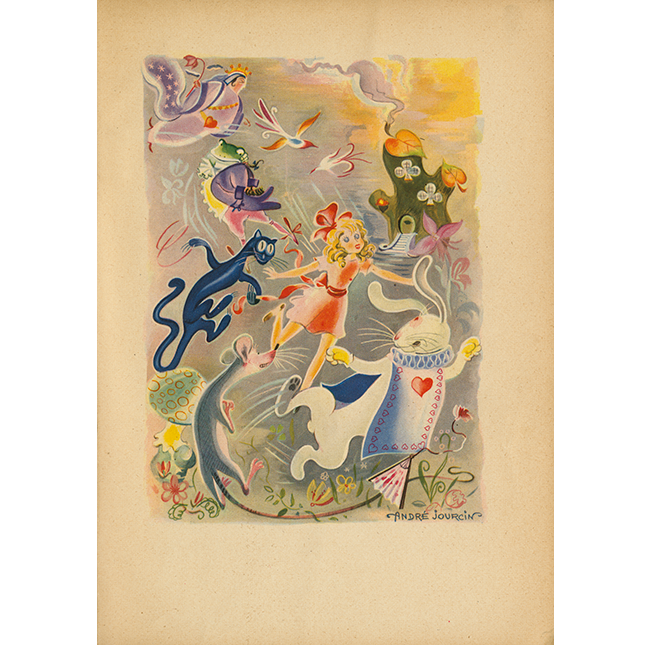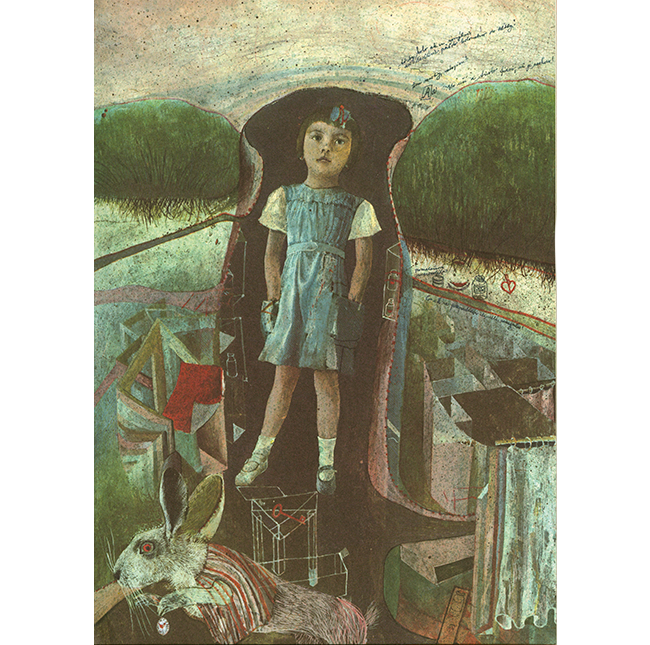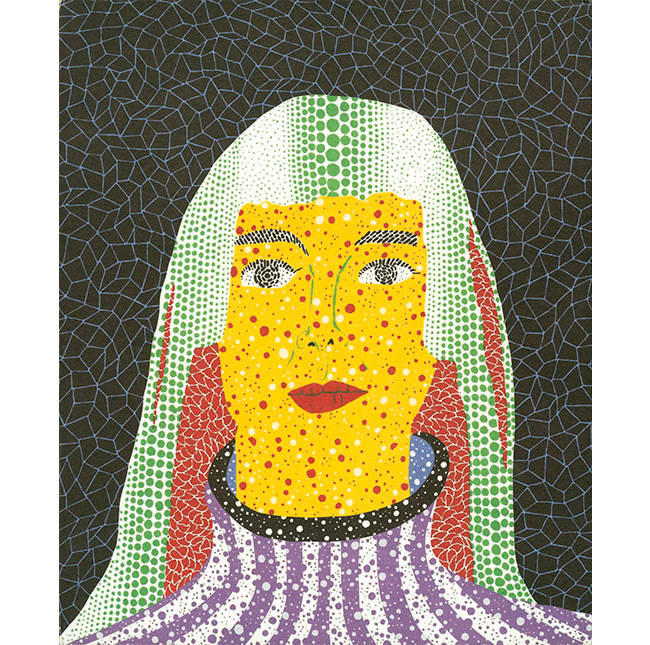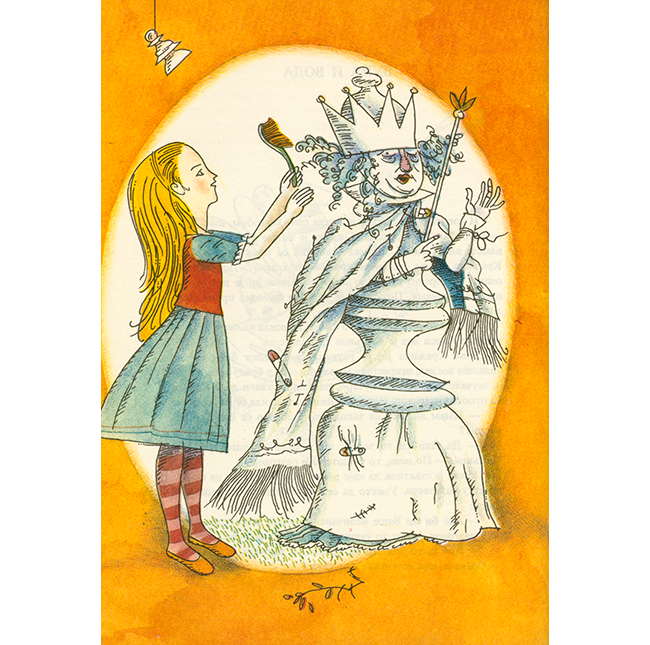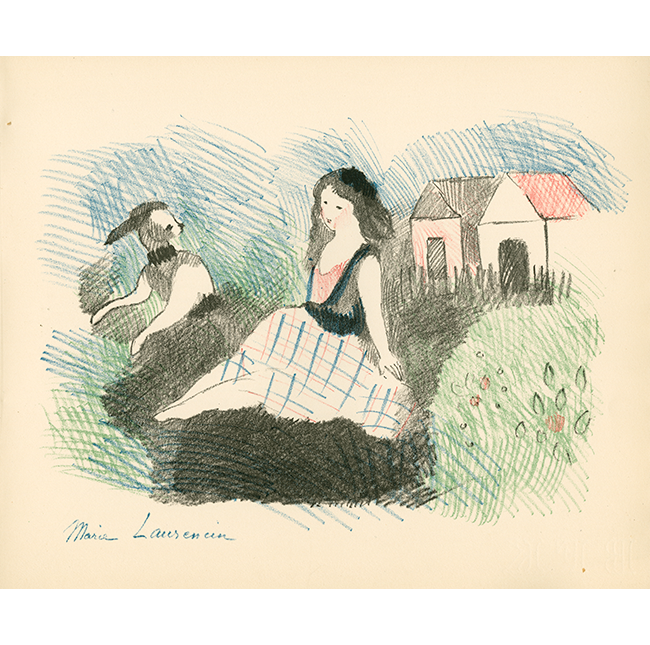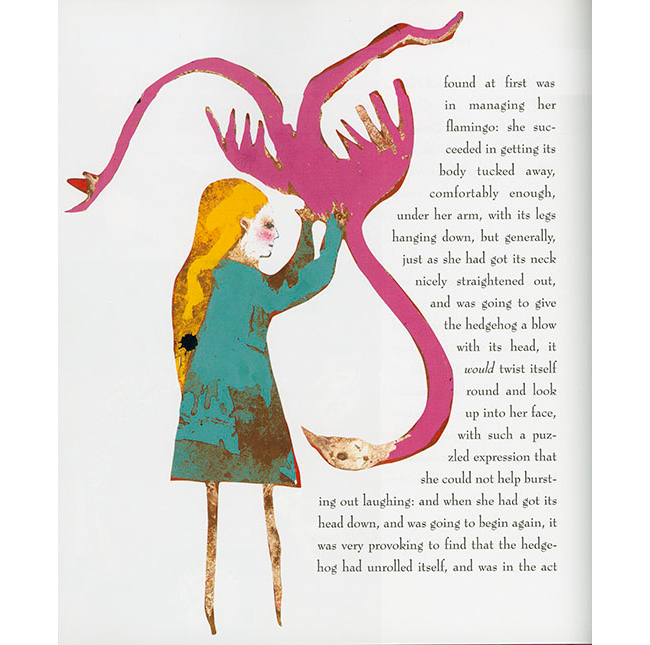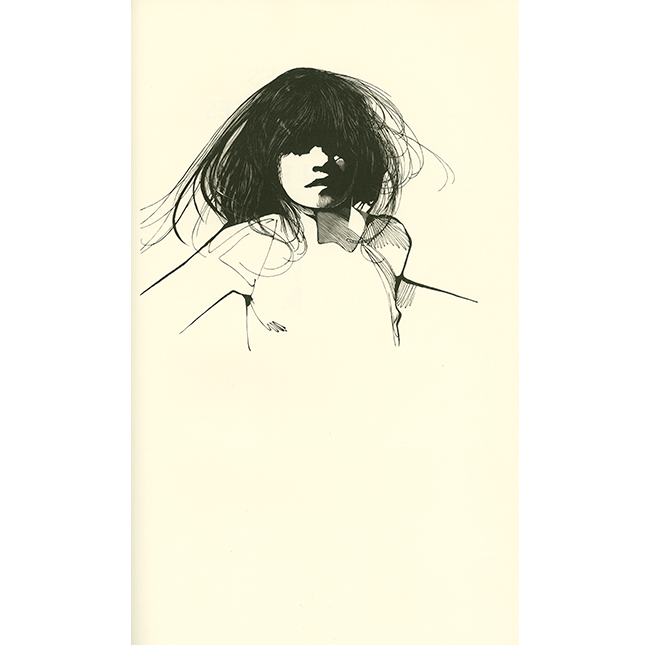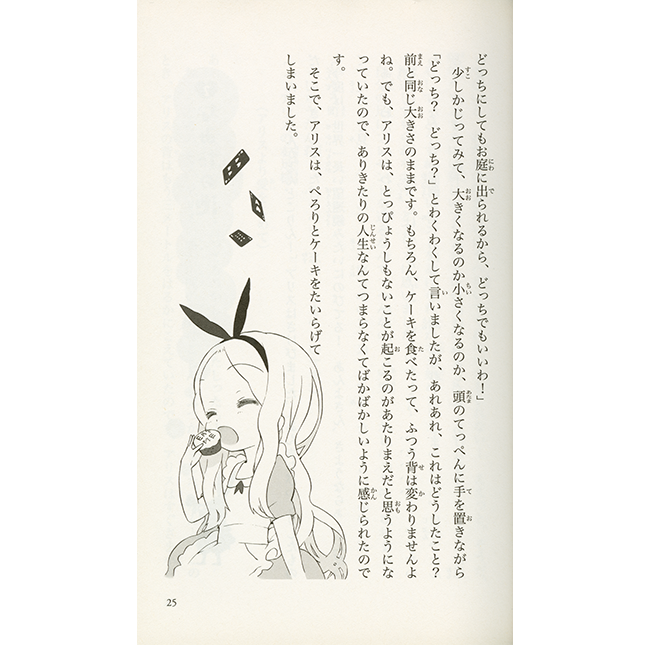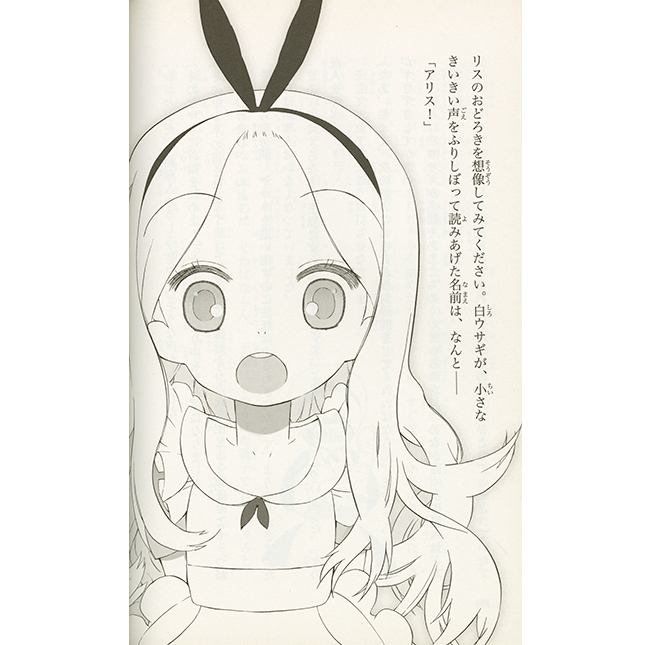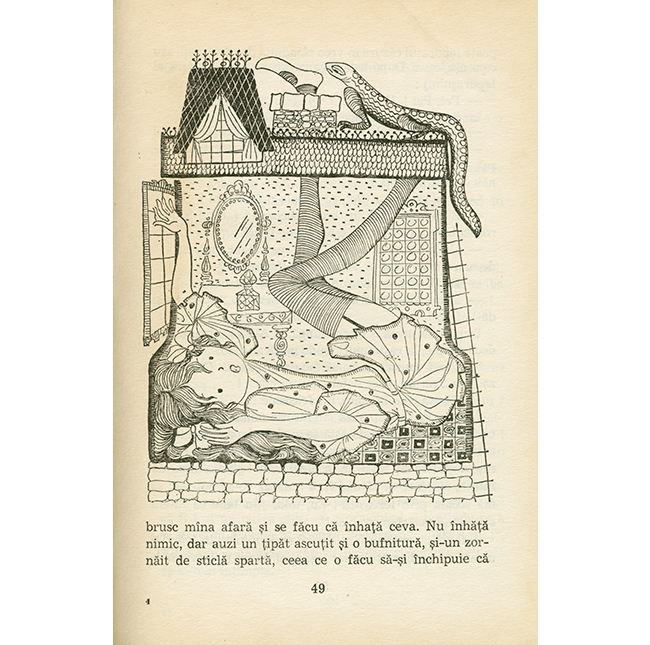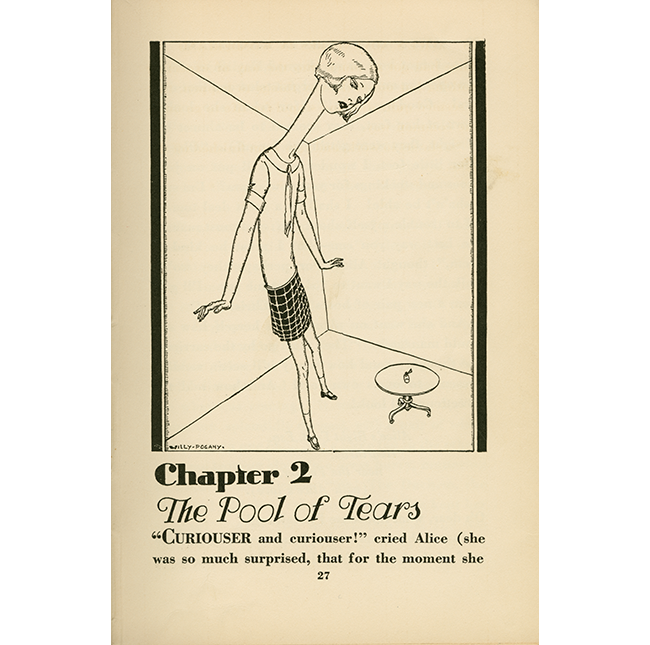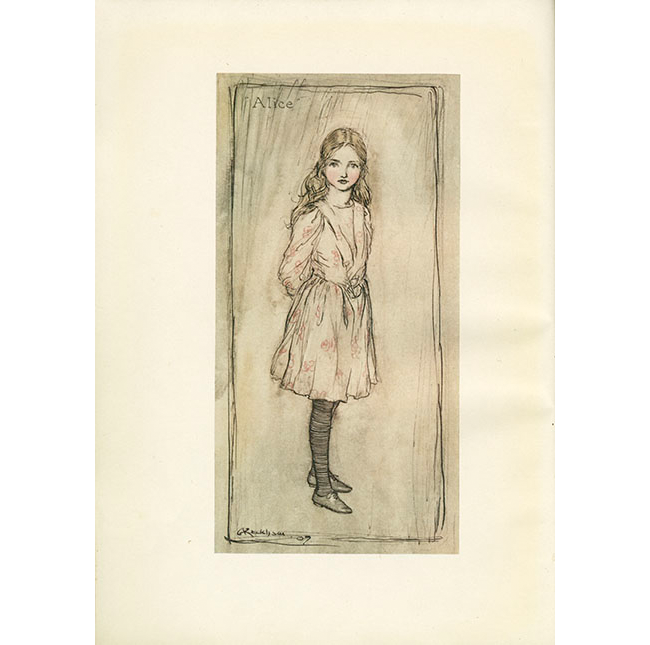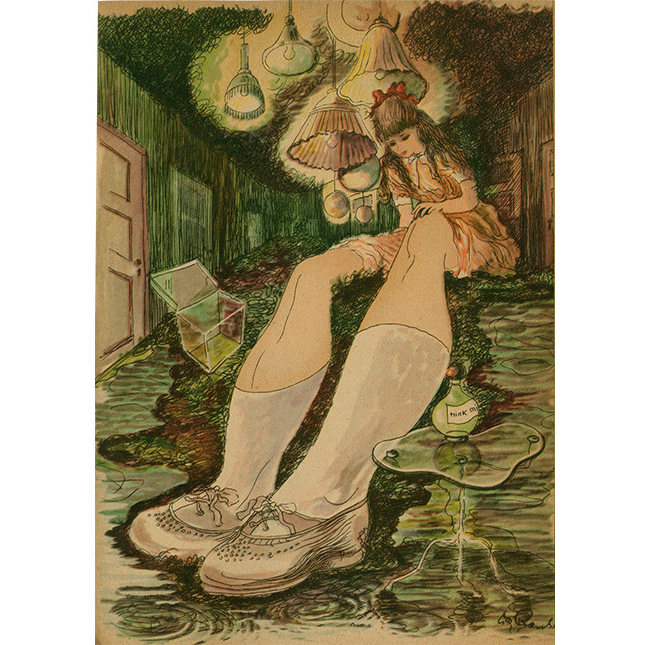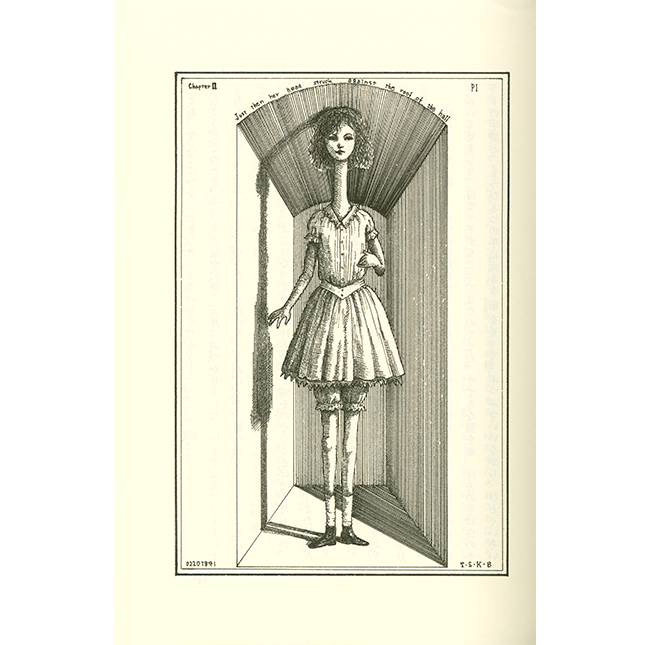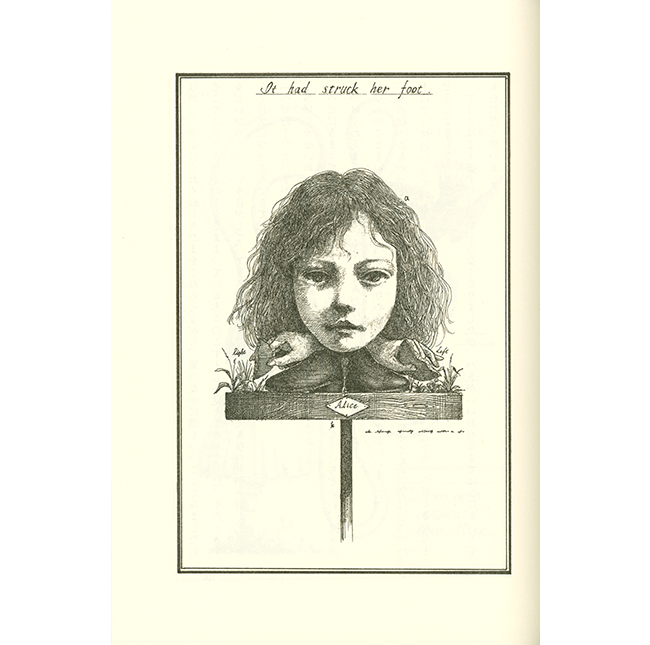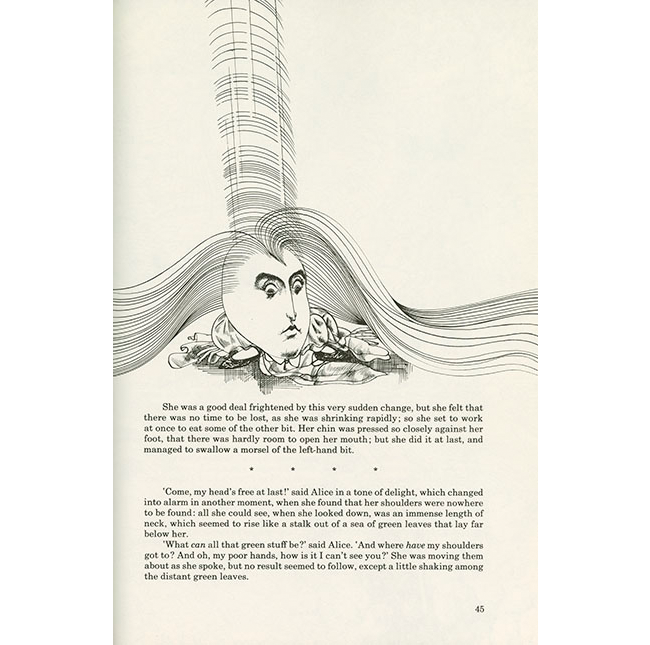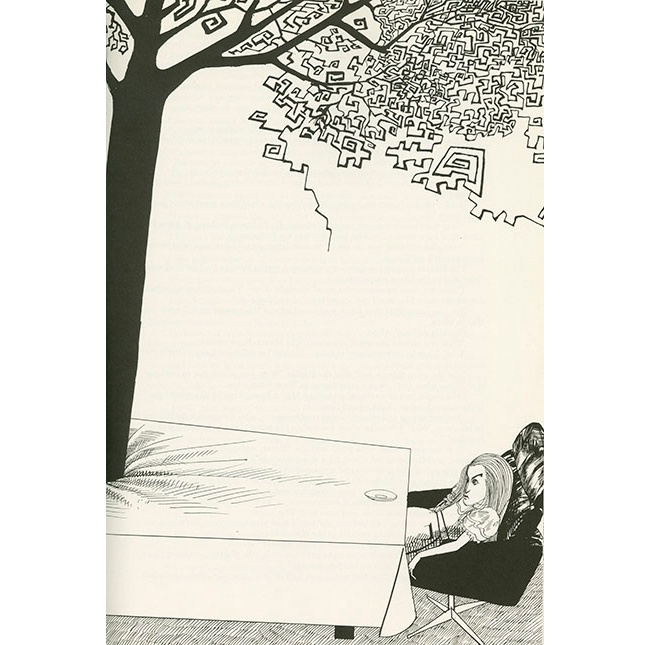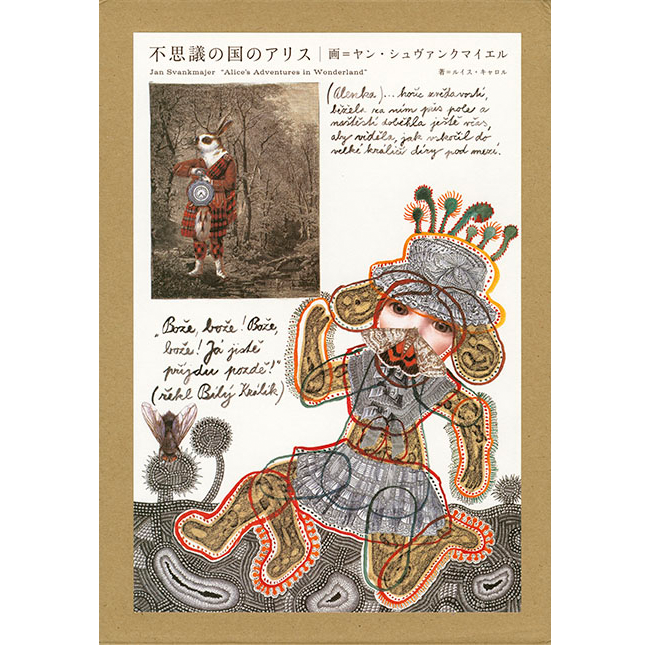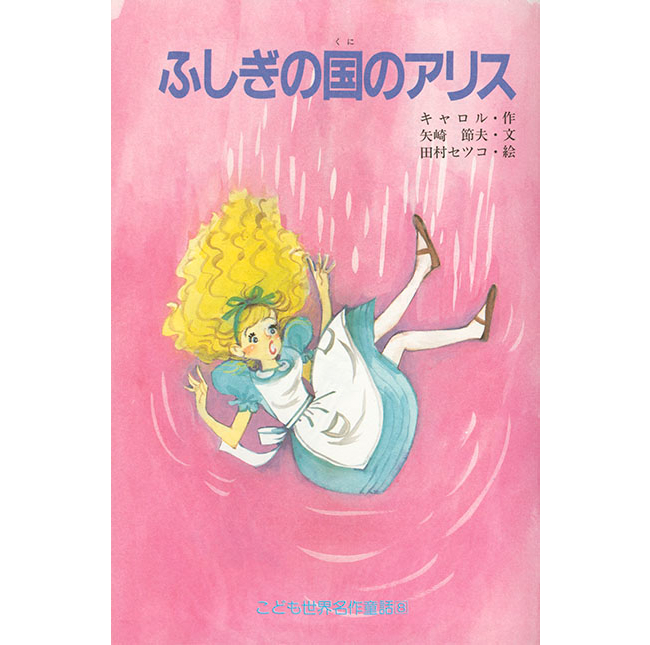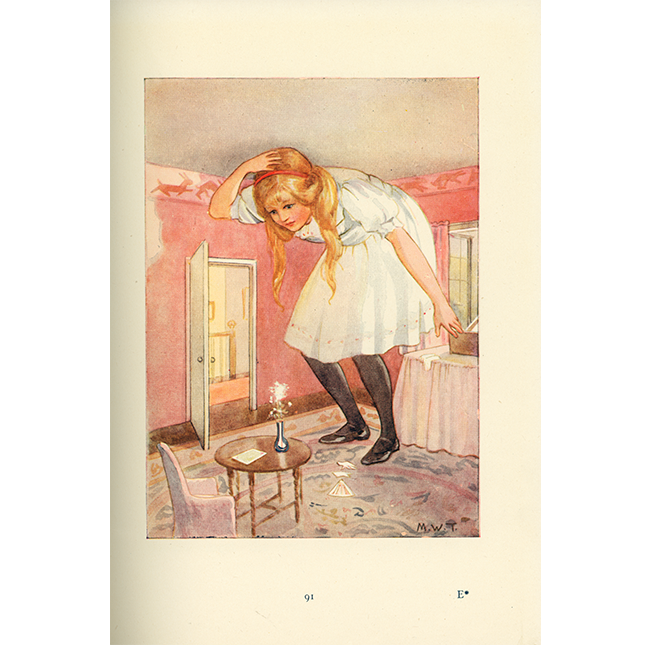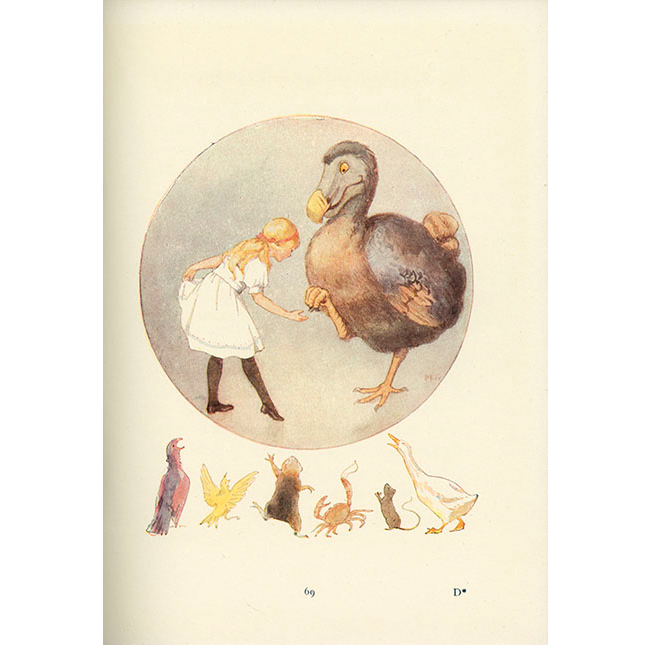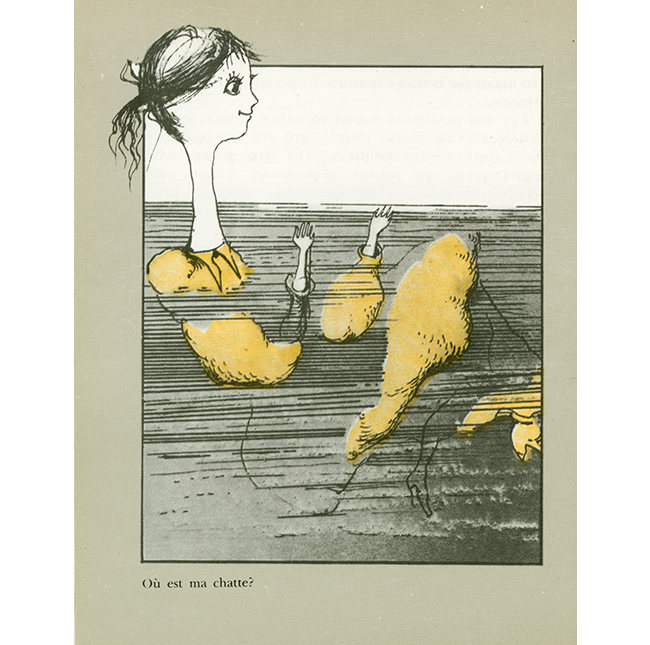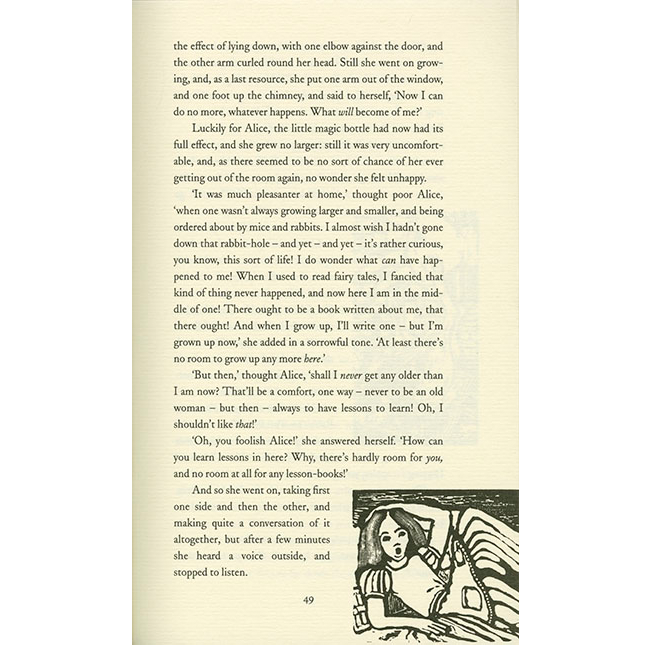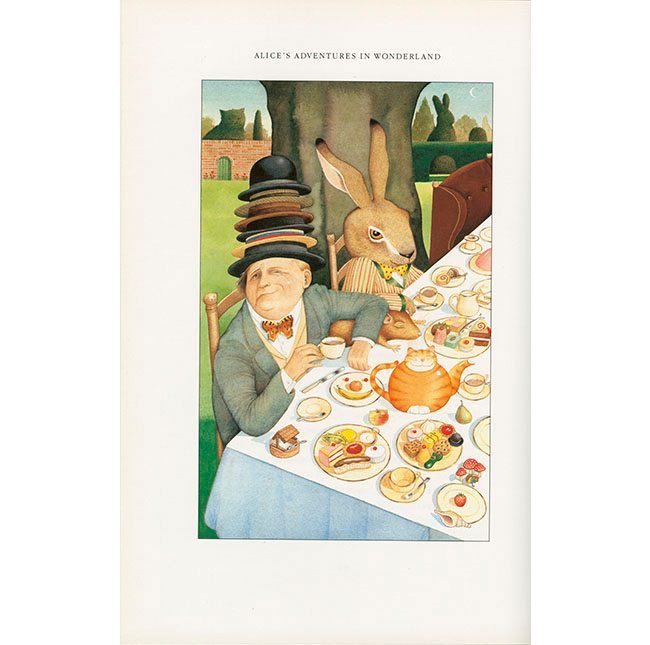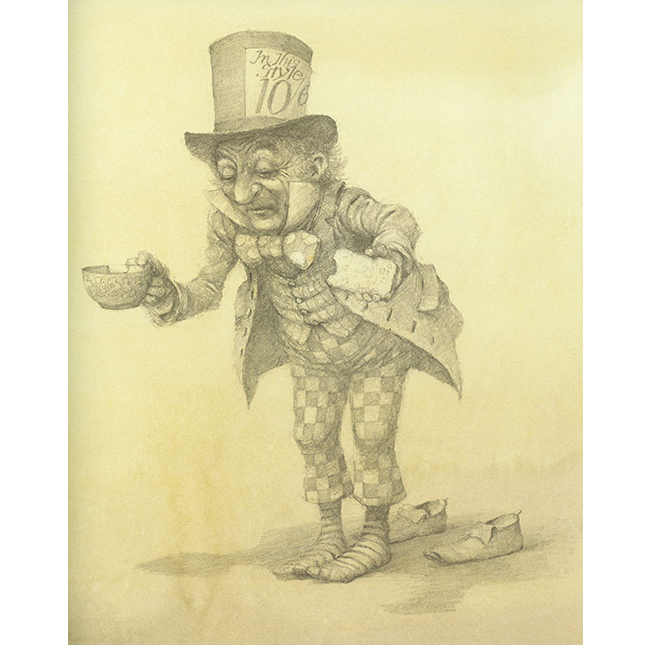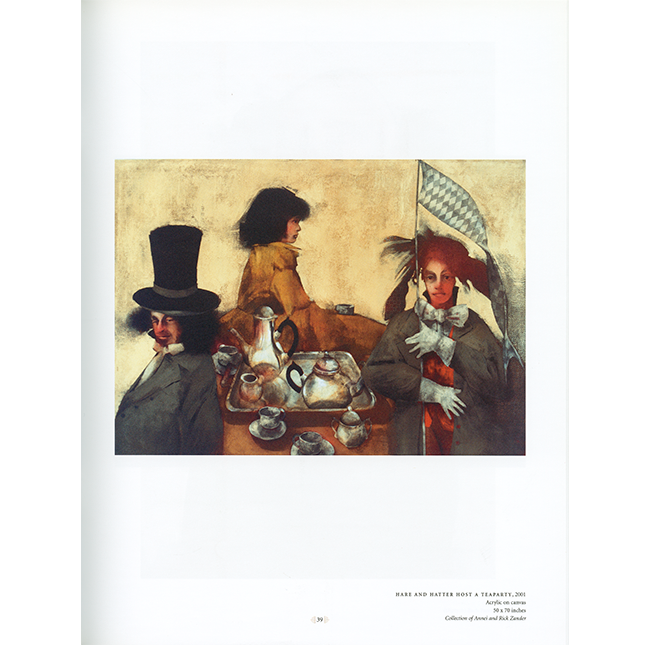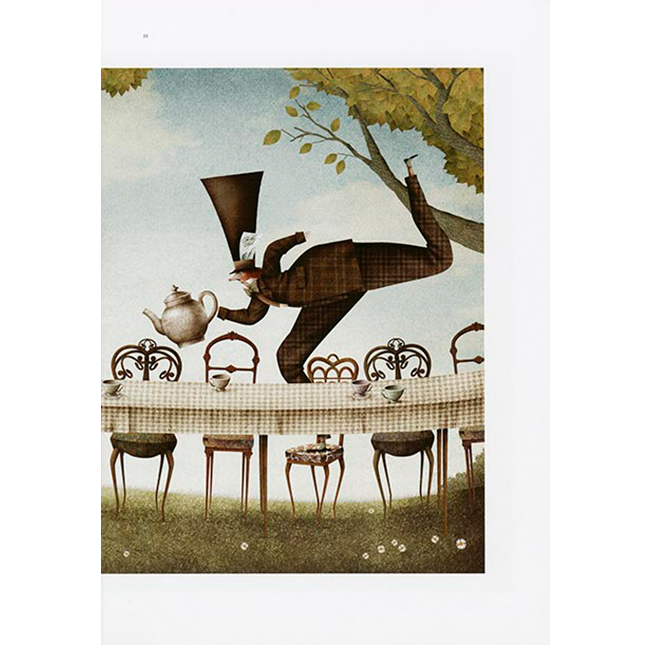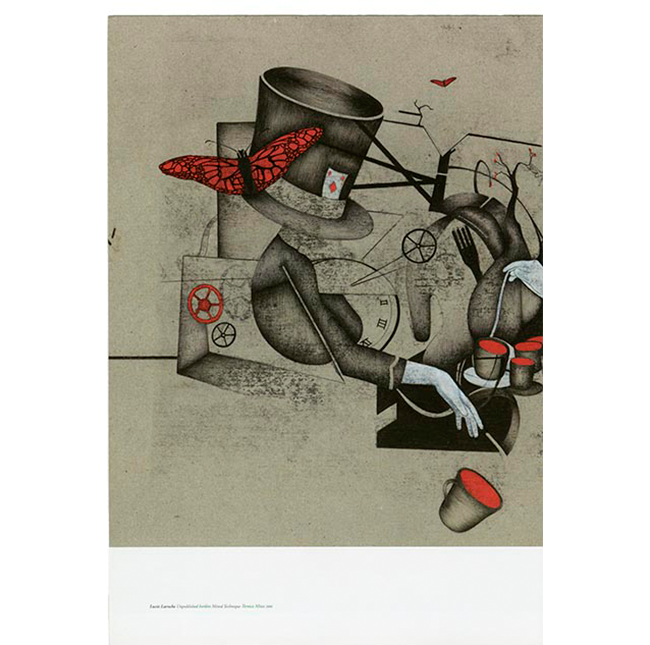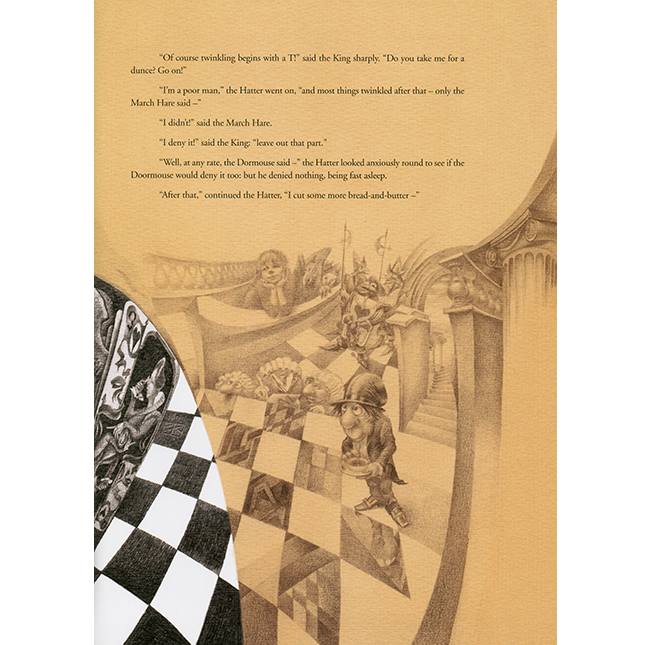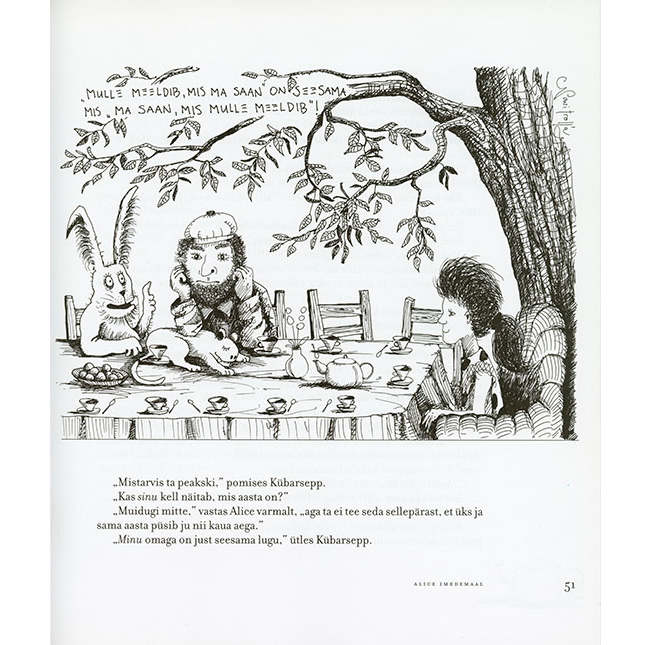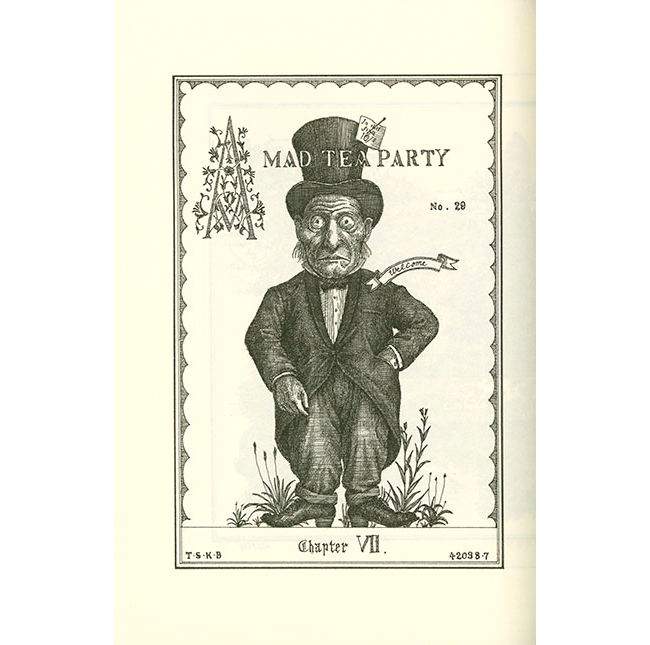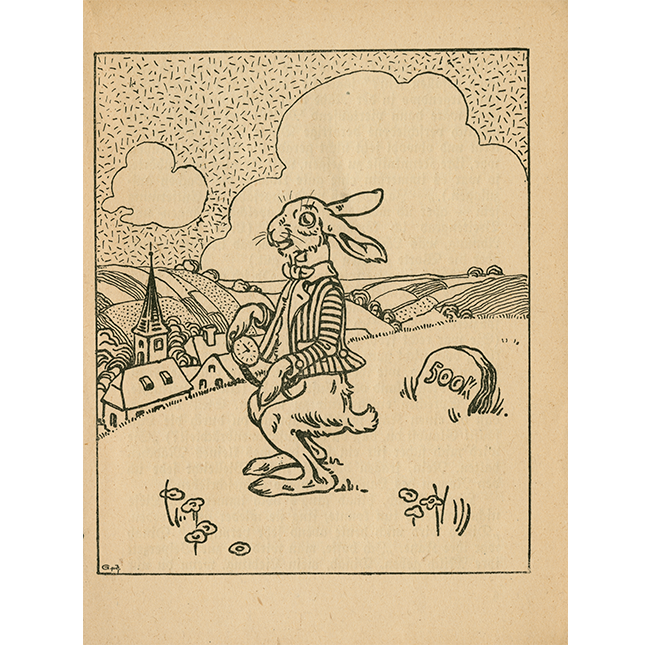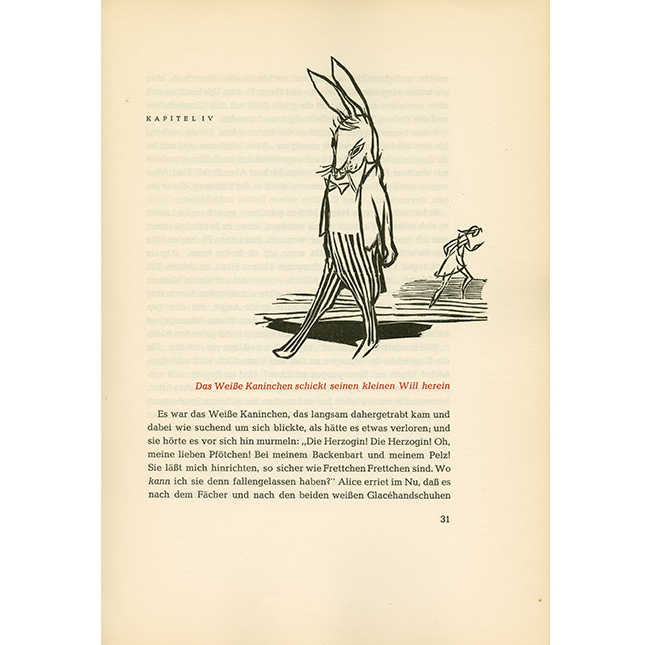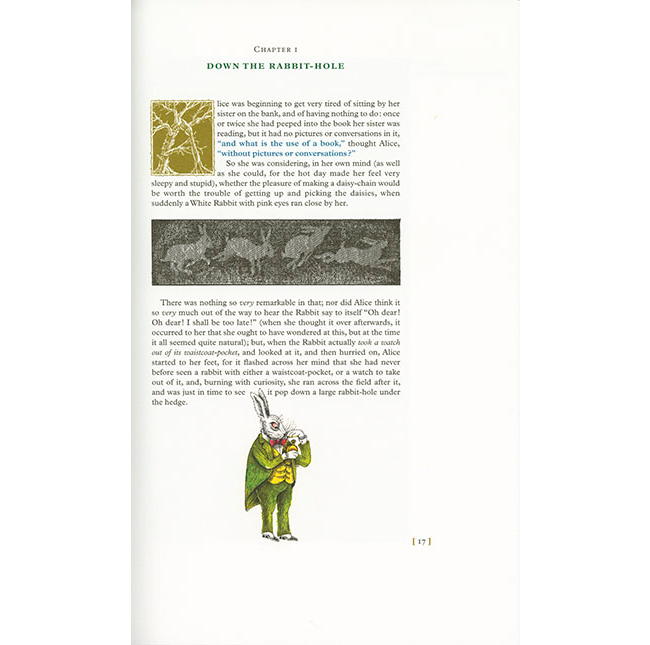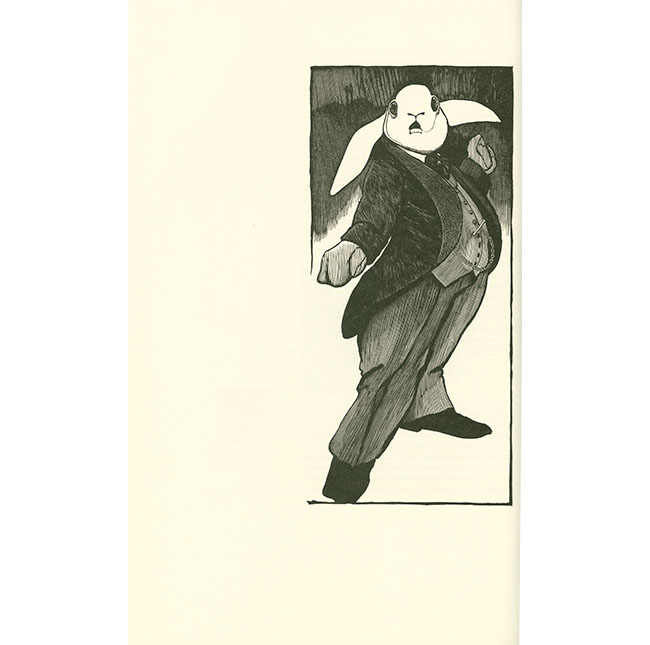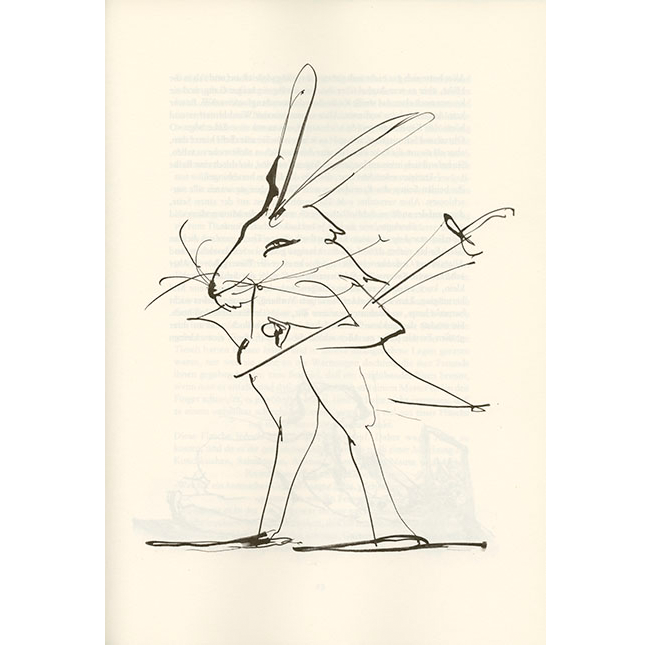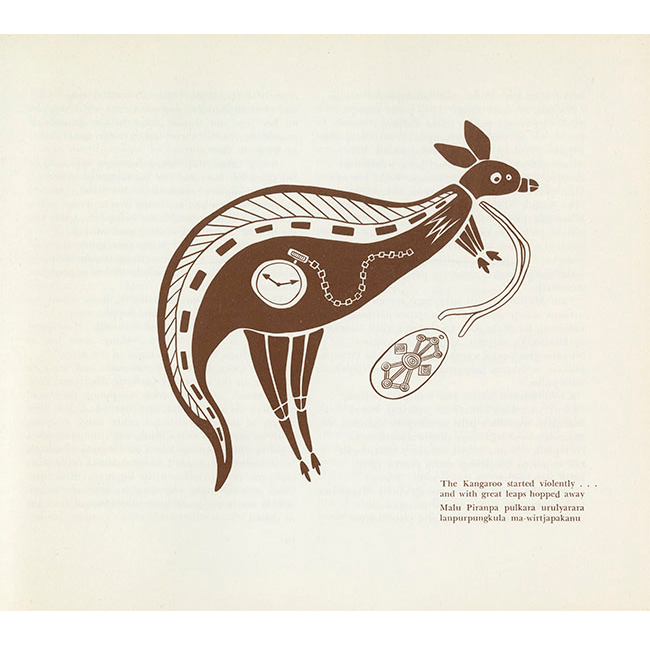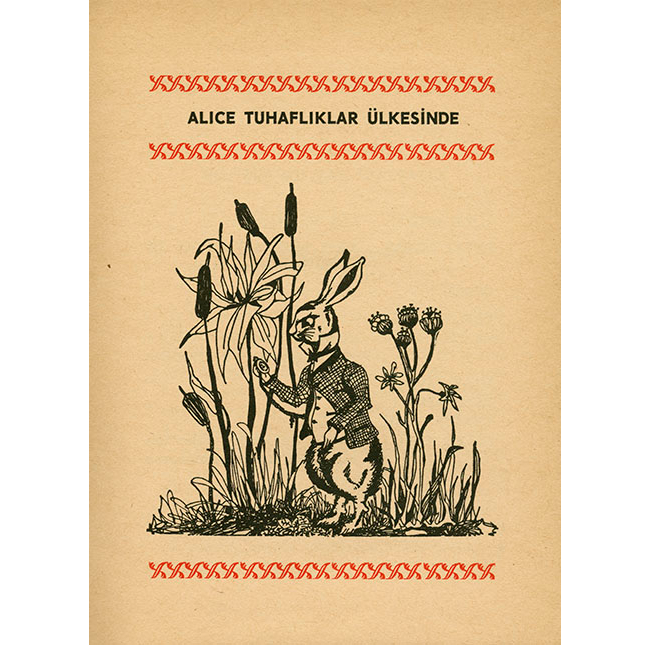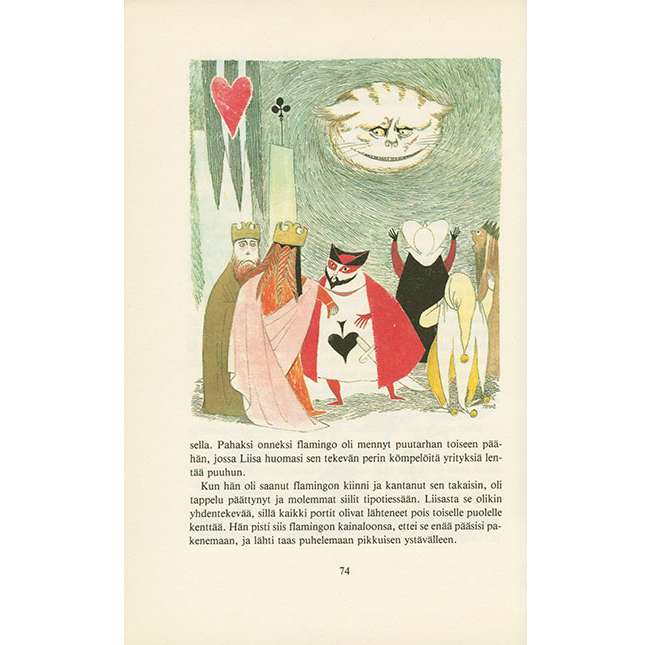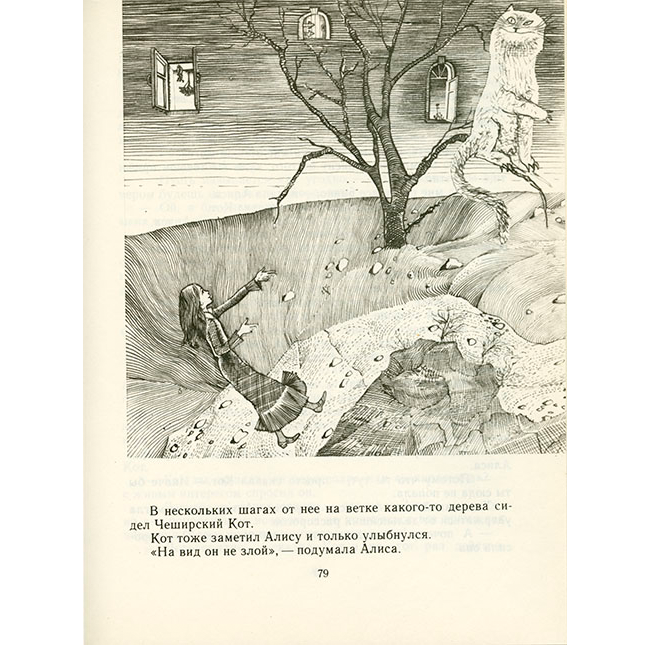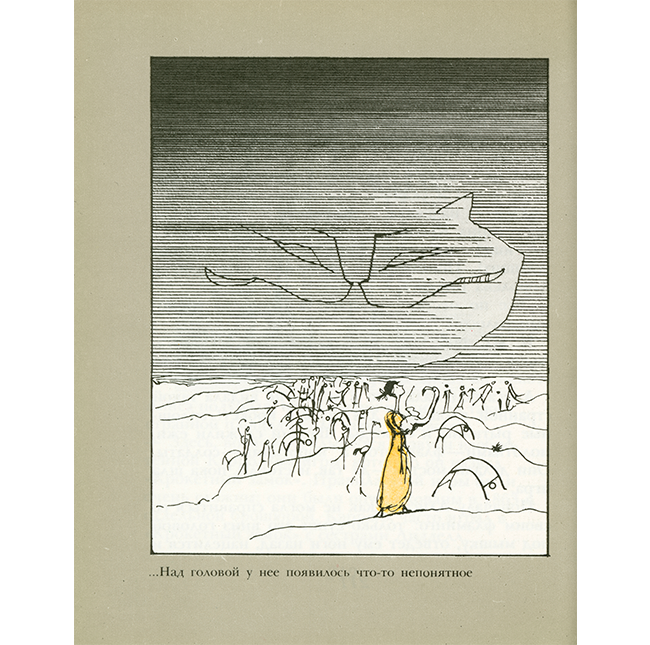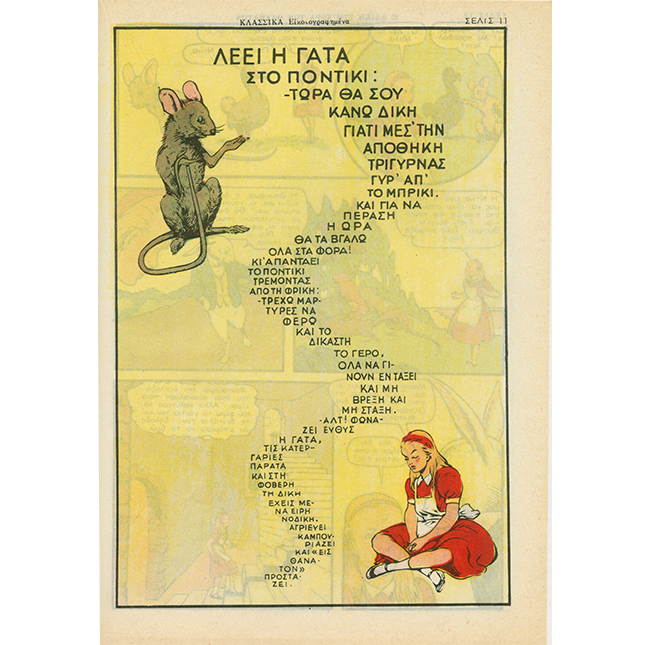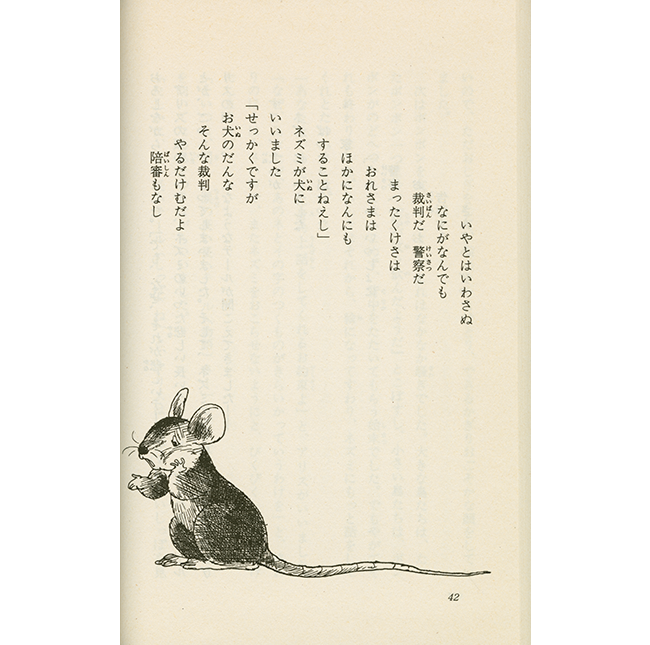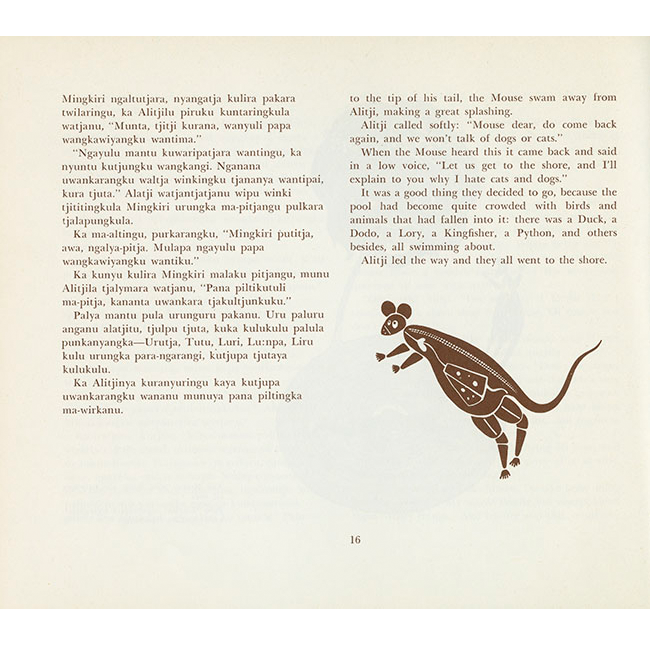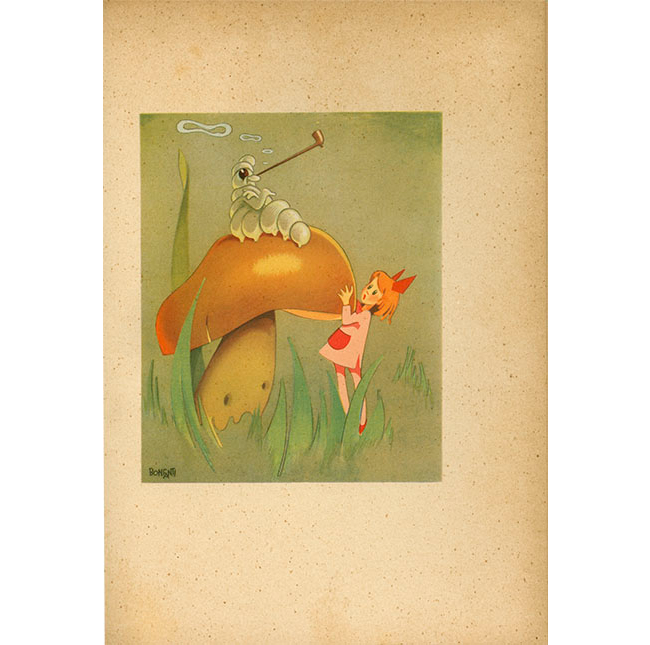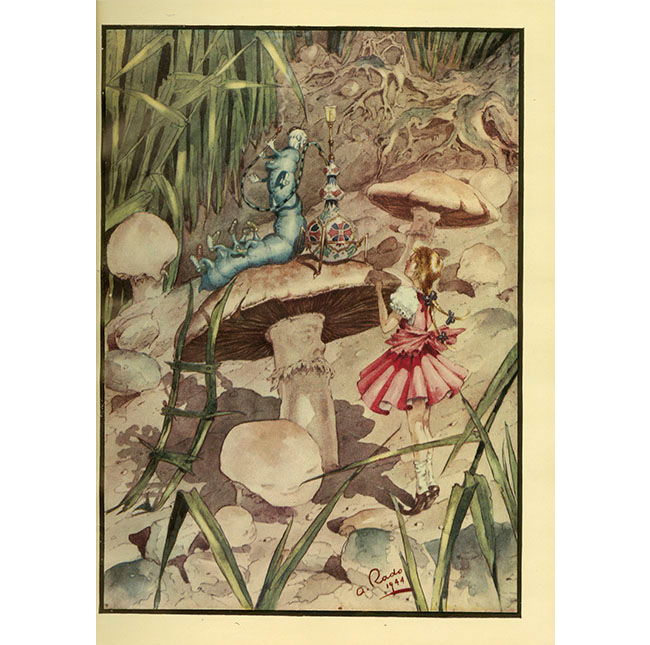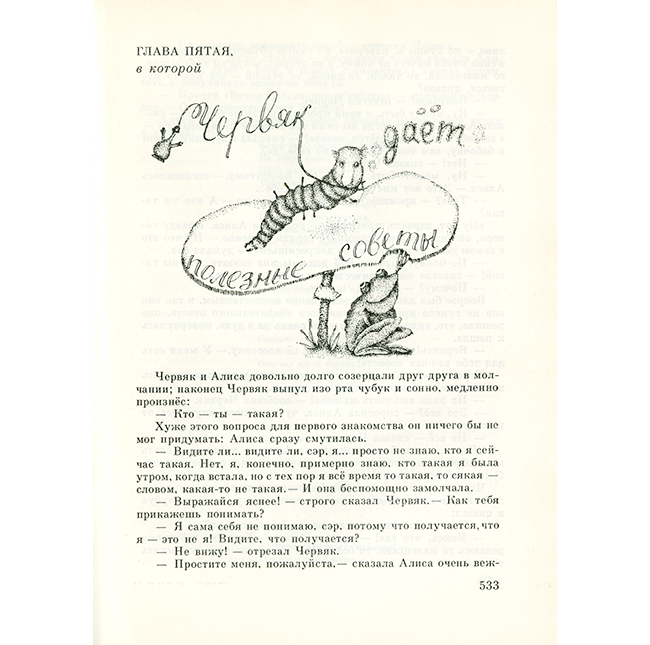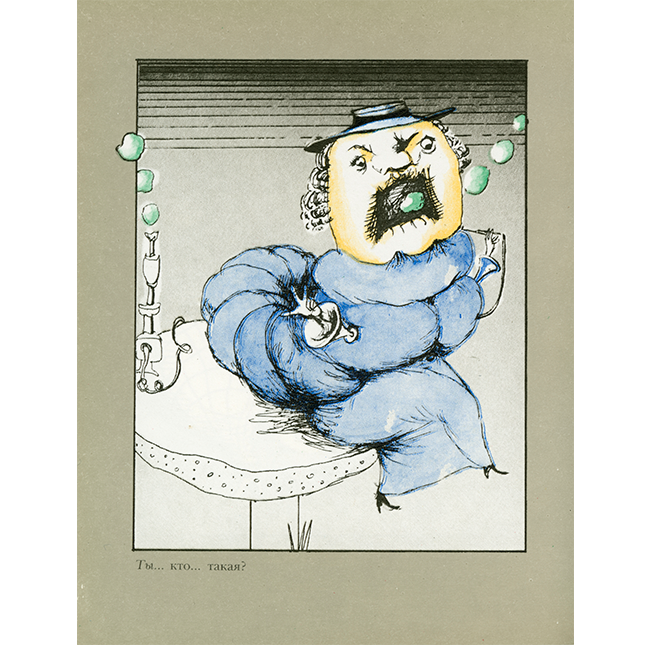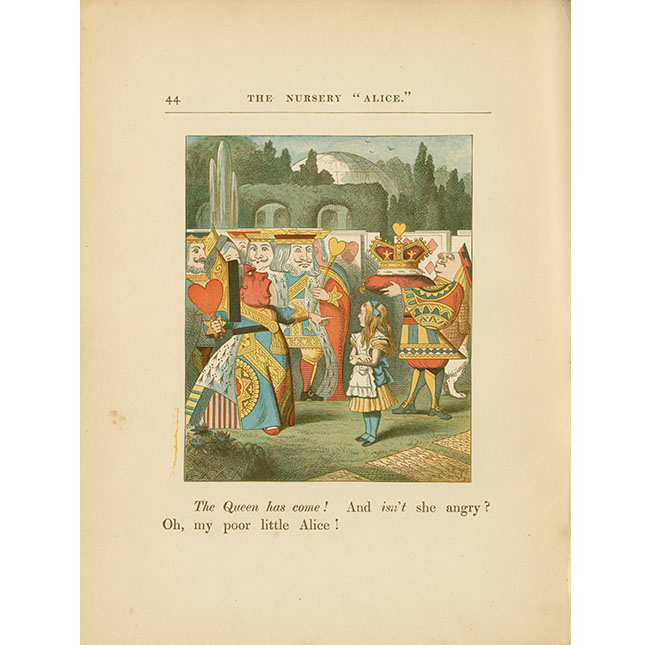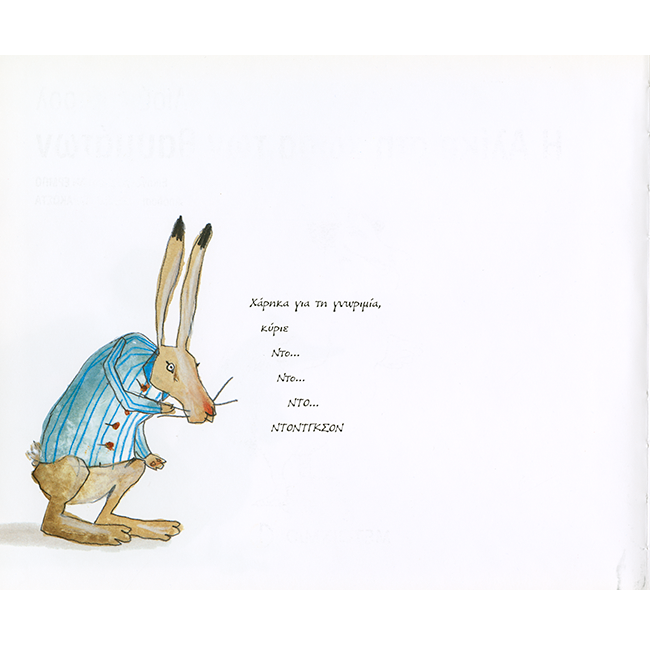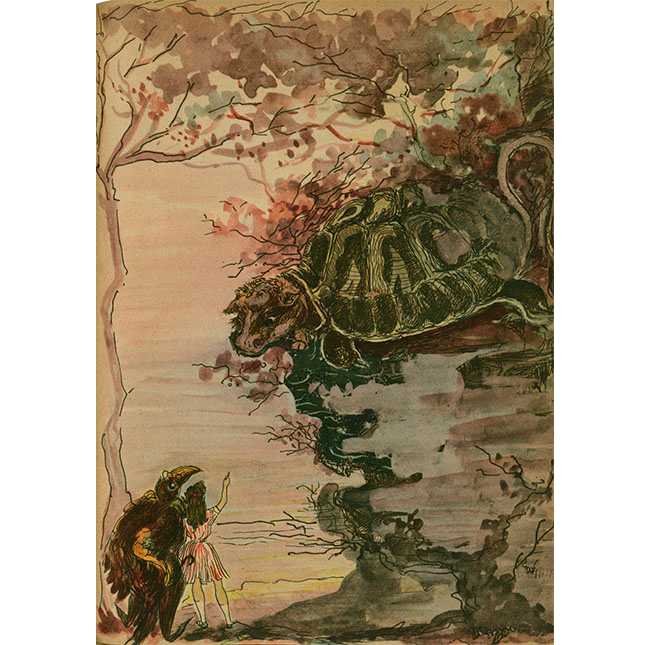Wonderland Characters
"You!" said the Caterpillar contemptuously. "Who are YOU?"
The Curious Cast of Wonderland
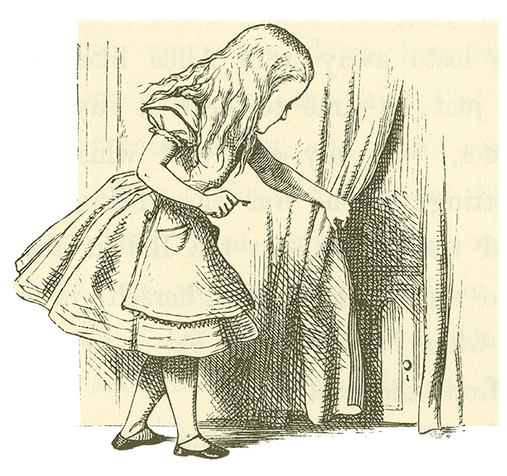
Alice's Adventures in Wonderland. Illustrated by John Tenniel.
Imagine that you could ask your favorite Wonderland characters the same question the Caterpillar asks Alice – Who are You? If you did, you might have some curious conversations!
Although Lewis Carroll’s story has remain unchanged for 150 years, illustrators and artists from around the world have re-envisioned the Wonderland characters through their own eyes. As you explore the colorful characters of Alice’s Adventures in Wonderland, you may find an aboriginal Alice, a green Cheshire Cat, a Mock Turtle with a body made out of a soup pot, and a Hatter who wears seven hats at one time!
By the time your adventure in Wonderland is over, you might ask yourself the question – Who are You?
Bibliographic information for the illustrations below can be found in the Illustrated Alice section.
Alice
“Who in the world am I? Ah, THAT's the great puzzle!”
Known For:
Following a White Rabbit and falling into Wonderland. Swimming in a pool of her own tears, getting stuck in the White Rabbit’s house, inviting herself to the Mad Tea Party, playing croquet with the Queen using flamingos and hedgehogs, and interrupting the trial of the Knave of Hearts.
Description:
Sensible, polite, and intensely curious. Straight hair, wears a pinafore. Size changes on occasion, generally when she eats or drinks something.
Last Appearance:
Waking up from Wonderland to find herself in her sister’s lap. (Though she later finds herself in Looking-Glass Land.)
Did You Know:
Tenniel’s drawings of Alice look nothing like Alice Liddell, on whom Carroll’s heroine is based. Alice Liddell had short, dark hair, and straight bangs.
In the story, Alice has a cat named Dinah. Alice Liddell was also fond of her family’s two cats - one of which was named Dinah.
According to Lewis Carroll, Alice is:
“courteous to all, high or low, grand or grotesque, King or Caterpillar…trustful, ready to accept the wildest impossibilities with all that utter trust that only dreamers know…wildly curious…with the eager enjoyment of Life that comes only in the happy hours of childhood.”
The Hatter
Known For:
Speaking nonsense and asking riddles which have no answer. Frustrating tea party guests with his rudeness.
Description:
Wears a large hat. Frequently seen drinking tea and eating bread with butter. Usually in the company of the March Hare and Dormouse.
Last Appearance:
Rushing out of the courtroom without his shoes during the trial of the Knave of Hearts, trying to evade execution.
Did You Know:
John Tenniel may have based his illustration of the Hatter on an eccentric Oxford furniture dealer, Theophilus Carter, who always wore a top hat.
The tag on the Hatter’s hat is a price tag, displaying the price: 10 shillings and 6 pence.
He is never actually called the Mad Hatter in Carroll’s text. It is the Cheshire Cat who tells Alice that the March Hare and the Hatter are “both mad.”
Lewis Carroll never intended for the Hatter’s riddle to have an answer. However, he later pointed out a “fairly appropriate” answer to be:
“Because it can produce a few notes, tho they are very flat; and it is nevar put with the wrong end in front!”
“Why is a raven like a writing desk?”
The White Rabbit
“Oh dear! Oh dear! I shall be too late!”
Known For:
Perpetual tardiness. Timidity. Serving as Herald to the Queen and King of Hearts.
Description:
White fur and pink eyes. Wears a waistcoat and carries a pocket-watch. May appear rushed, nervous, and easily agitated.
Last Appearance:
Reading evidence to the court at the trial of the Knave of Hearts.
Did You Know:
Lewis Carroll’s inspiration for the White Rabbit may have been Alice Liddell’s father, Dean Henry Liddell, who was known for running late to services at Christ Church Cathedral in Oxford.
According to Lewis Carroll:
“the White Rabbit should wear spectacles. I am sure his voice should quaver, and his knees quiver, and his whole air suggest a total inability to say “Bo” to a goose!”
The Cheshire Cat
Known For:
Giving vague directions and posing philosophical questions. One of the few characters Alice enjoys speaking with in Wonderland.
Description:
Always grinning, many teeth. Prone to disappearing and reappearing at will.
Last Appearance:
Disappearing during a game of croquet in the Queen’s garden as the King, Queen, and Executioner debate whether you can cut off a head that has no body.
Did You Know:
The phrase “grinning like a Cheshire cat” pre-dates Lewis Carroll’s tale. There are many suggested origins. One popular story notes that the cats in Cheshire, England, an area dominated by dairy farming, would grin from the abundance of cream.
The “Cheshire Cat effect” is a scientific phenomena that describes why a stationary object seen by one eye disappears when the other eye focuses on a moving object.
“I growl when I'm pleased, and wag my tail when I'm angry. Therefore I'm mad.”
The Mouse
“Mine is a long and a sad tale!”
Known For:
Swimming around in Alice’s pool of tears. Boring a wet audience with a dry lecture about William the Conqueror.
Description:
A rather long tail and an intrinsic hatred of cats. Loves exercising authority over others. Easily offended.
Last Appearance:
Abruptly walking away in the middle of his tale because Alice has annoyed him.
Did You Know:
The text of the Mouse’s tale is printed so that the words form the shape of the mouse’s tail. This is an example of concrete poetry.
Alice repeatedly upsets the Mouse and other caucus race creatures when she talks about her cat Dinah, who is “such a capital one for catching mice.” Alice Liddell, the girl who inspired Carroll’s tale, was also fond of her family’s two cats - one of which was named Dinah.
The Caterpillar
Known For:
Brusque, impolite, overly inquisitive, and frustratingly contradictory conversation.
Description:
Blue colored, exactly three inches tall, “a very good height indeed.” Spends his time sitting on a mushroom and smoking a hookah.
Last Appearance:
Crawling away from Alice with the helpful advice for how his mushroom can aid her in Wonderland.
Did You Know:
In John Tenniel’s original illustration for Alice's Adventures in Wonderland, the Caterpillar’s nose and chin are actually two of its legs.
According to Robert Hornback, the mushroom the caterpillar is perched on in Tenniel’s illustration is not an hallucinogenic variety. It most likely an Amanita fulva, or tawny grisette mushroom, which is “nontoxic and rather tasty.”
“One side will make you grow taller, and the other side will make you grow shorter.”
The Queen of Hearts
“Off with their heads!”
Known For:
Her quick temper and tyrannical rule of Wonderland. Calling for beheadings whenever displeased. Issuing sentences in court before the verdict is decided.
Description:
Face often red with fury. May be accompanied by a royal procession.
Last Appearance:
Ordering Alice to be beheaded for defiance at the trial of the Knave of Hearts.
Did You Know:
Despite her never-ending threats, the characters in Wonderland always seem to evade execution. The Gryphon tells Alice “they never executes nobody, you know.”
According to Lewis Carroll:
“I pictured to myself the Queen of Hearts as a sort of embodiment of ungovernable passion—a blind and aimless Fury.”
The Dormouse
Known For:
Falling asleep and serving as a cushion for the March Hare and the Hatter. Joining in with the general nonsense at the Mad Tea Party. Telling strange tales about three little girls who live in a treacle well.
Description:
Small, squirrel-like animal. Dozing off at the Mad Tea Party and at Court.
Last Appearance:
Being suppressed by order of the Queen of Hearts and dragged from the Knave of Hearts’ trial.
Did You Know:
Dormice were a popular pet in Victorian England.
Dormice are nocturnal animals, known for long periods of hibernation. The Latin word “dormire” means to sleep.
Tenniel’s illustration of the Dormouse may have been inspired by Dante Gabriel Rossetti’s pet wombat Topsy, who would fall asleep at the table. Lewis Carroll was a friend of the Rossetti’s.
Treacle is a sugary, molasses syrup popular in Britain.
“You might just as well say…that ‘I breathe when I sleep’ is the same thing as ‘I sleep when I breathe’!”
The March Hare
“It wasn’t very civil of you to sit down without being invited.”
Known For:
Hosting the Mad Tea Party outside his house.
Description:
Long ears and straw on top of his head. Constantly drinking tea. May appear gloomy, rude, and/or stark raving mad.
Last Appearance:
Trying to stuff the Dormouse into a teapot, with help from the Hatter.
Did You Know:
Tenniel drew straw in the March Hare’s hair to show that he was mad. In England, hares were thought to go mad in Spring. Straw was a symbol of madness.
In The Nursery Alice, Carroll wrote:
“that’s the March Hare with the long ears, and straws mixed up with his hair. The straws showed he was mad--I don’t know why. Never twist up straws among your hair, for fear people should think you're mad!”
The March Hare’s house, often seen in the background of illustrations of the Mad Tea Party, features chimneys shaped like rabbit ears and a roof thatched with fur.
The March Hare returns in Through the Looking-Glass as the King’s messenger Haigha.
The Mock Turtle
Known For:
Constantly weeping, sighing deeply, and pausing dramatically while telling the story of his early life as a real turtle. Speaks in puns.
Description:
Large eyes, with a melancholy singing voice. Body of a turtle combined with the tail, hooves, and head of a calf.
Last Appearance:
Singing “Beautiful Soup” as the Gryphon runs off with Alice to the trial.
Did You Know:
Mock turtle soup was a popular dish in the 18th and 19th century. It is an inexpensive imitation of green turtle soup. Recipes usually call for calf brains, head, organs, and/or hooves to replicate the texture of turtle meat.
In Tenniel’s illustration, the Mock Turtle’s body is composed of the ingredients that go into a typical mock turtle soup recipe.
“Once...I was a real Turtle.”
The Duchess
"Tut, tut, child!...Everything's got a moral, if only you can find it."
Known For:
Violent treatment of a baby. Being late to the Queen’s croquet game. Employing a manic cook and a clueless footman.
Description:
“Very ugly,” with a sharp chin that she presses painfully into Alice’s shoulder at the croquet ground. Volatile and hot-tempered personality, made worse by too much pepper in her kitchen.
Last Appearance:
Fleeing the Queen's game of croquet to avoid execution.
Did You Know:
Tenniel’s illustration of the Duchess may be based on a 14th century painting of Margaret Maultasch, Countess of Tyrol, which is titled ‘The Ugly Duchess’.
The Cheshire Cat belongs to the Duchess. You can see him in John Tenniel’s illustration of the Duchess in her kitchen.

